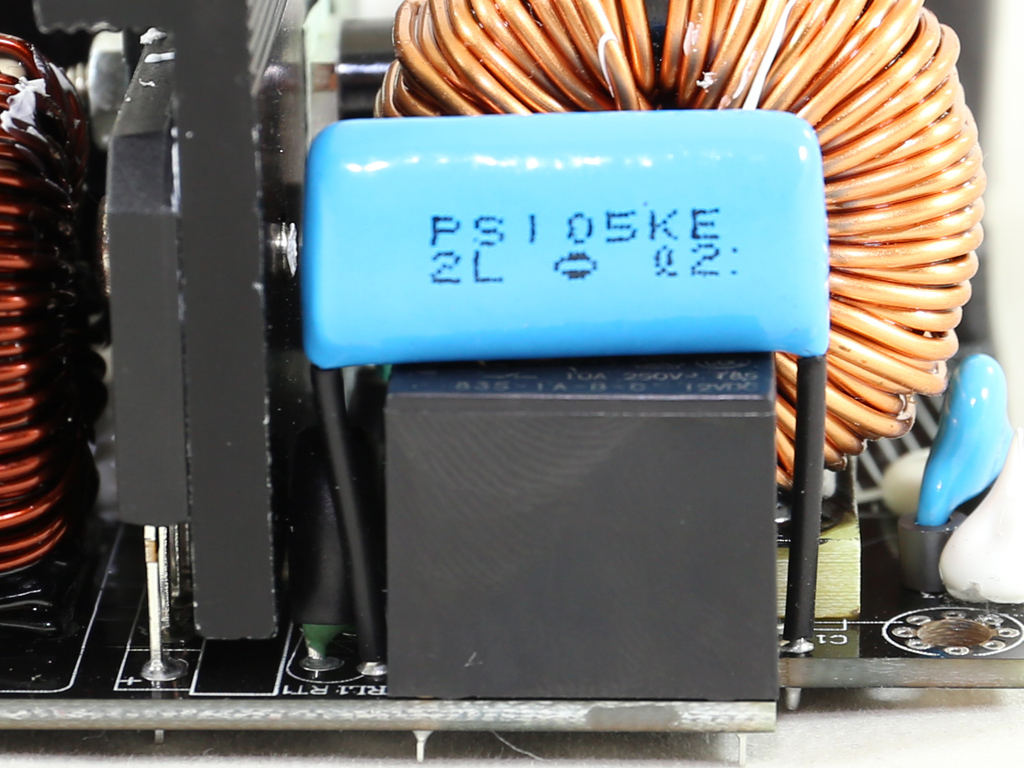Corsair SF450 PSU Review
Corsair enters the SFX PSU market with its new SF series consisting of two models at 450W and 600W capacities. Both power supplies are fully modular, promise high performance and come with 92mm fans to minimize noise output.
Why you can trust Tom's Hardware
A Look Inside And Component Analysis
Parts Description
Before proceeding with this page, we strongly encourage you to a look at our PSUs 101 article, which provides valuable information about PSUs and their operation, allowing you to better understand the components we're about to discuss. Our main tools for disassembling PSUs are a Thermaltronics soldering and rework station, and a Hakko 808 desoldering gun.
| Primary Side | |
|---|---|
| Transient Filter | 4x Y caps, 2x X caps, 3x CM chokes, 1x MOV |
| Inrush Protection | NTC Thermistor & Relay |
| Bridge Rectifier(s) | 1x GBU1508 (600V, 15A @ 115 °C) |
| APFC MOSFETs | 1x Alpha & Omega AOK42S60 (700V, 25A @ 100 °C, 0.099 ohm) |
| APFC Boost Diode | 1x CREE C3D04060A (600V, 4A @ 135 °C) |
| Hold-up Cap(s) | 1x Nippon Chemi-Con (420V, 390uF, 2000h @ 105 °C, KMW) |
| Main Switchers | 2x Fairchild FCP104N60F (600V, 24A @ 100 °C, 104 mhm) |
| APFC Controller | Champion CM6500UNX & CM03X Green PFC controller |
| Switching Controller | Champion CM6901 |
| Topology | Primary side: Half-Bridge & LLC Resonant Converter Secondary side: Synchronous Rectification & DC-DC converters |
| Secondary Side | |
| +12V MOSFETs | 4x Alpha & Omega AON6590 (40V, 100A @ 100 °C, 1.55 mohm @ 125 °C) |
| 5V & 3.3V | DC-DC Converters: 4x Infineon BSZ040N04LS G (40V, 40A @ 100 °C, 4 mohm) PWM Controller: APW7159 |
| Filtering Capacitors | Electrolytics: 1x Nippon Chemi-Con (1000h @ 105 °C, KMG), Rubycon (105 °C) Polymers: Nippon Chemi-Con, CapXon (DC-DC converter) |
| Supervisor IC | SITI PS229 (OVP, UVP, OCP, PG) & AS358M |
| Fan Model | Corsair NR092L (92mm, 12V, 0.22A, 3950 RPM, Rifle Bearing) |
| 5VSB Circuit | |
| Rectifier | 1x APS04N60H FET (620V, 2.2A @ 100 °C) 2x SVM1045V (45V, 10A @ 25 °C) |
| Standby PWM Controller | Leadtrend LD7750RGR |
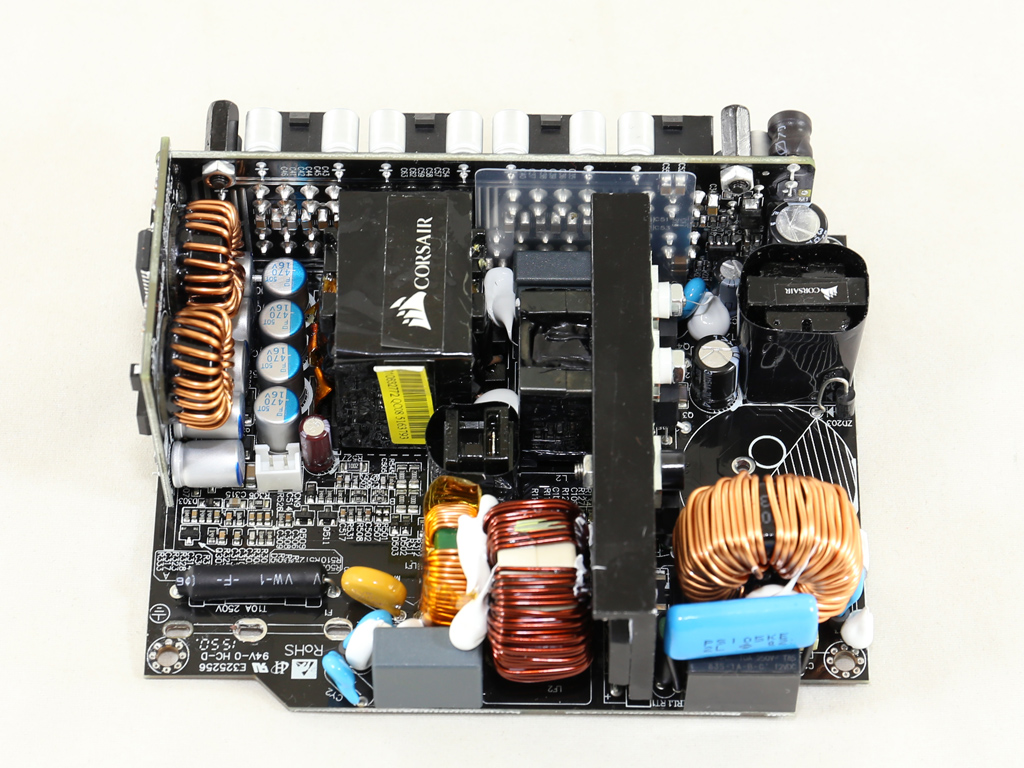
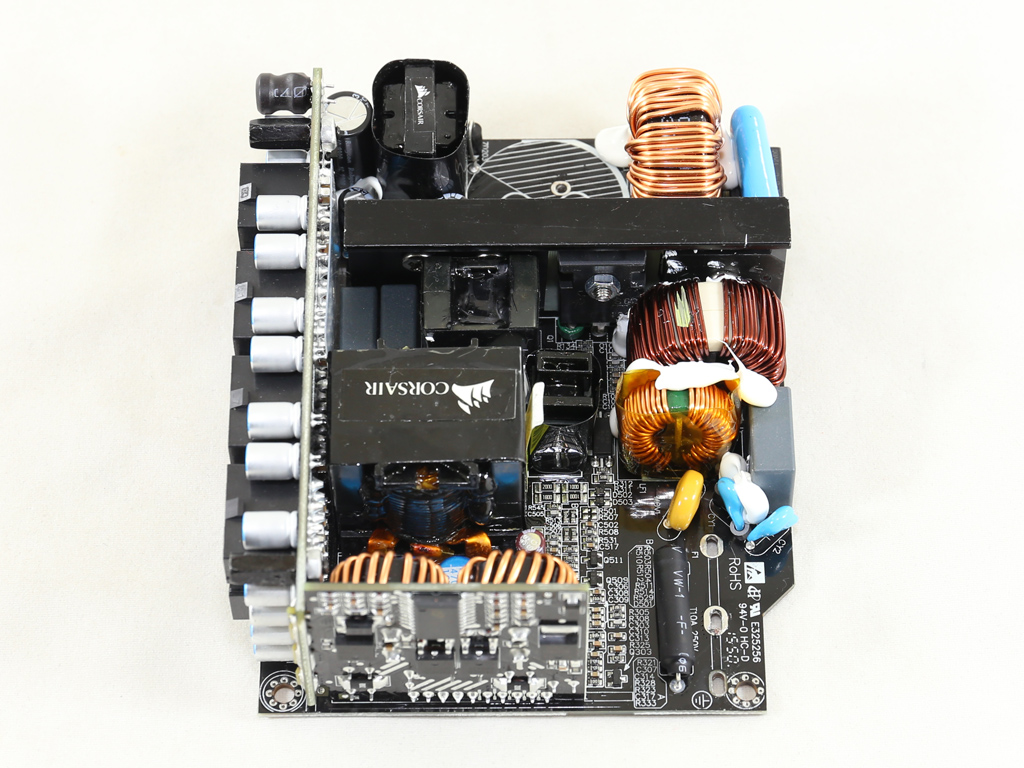
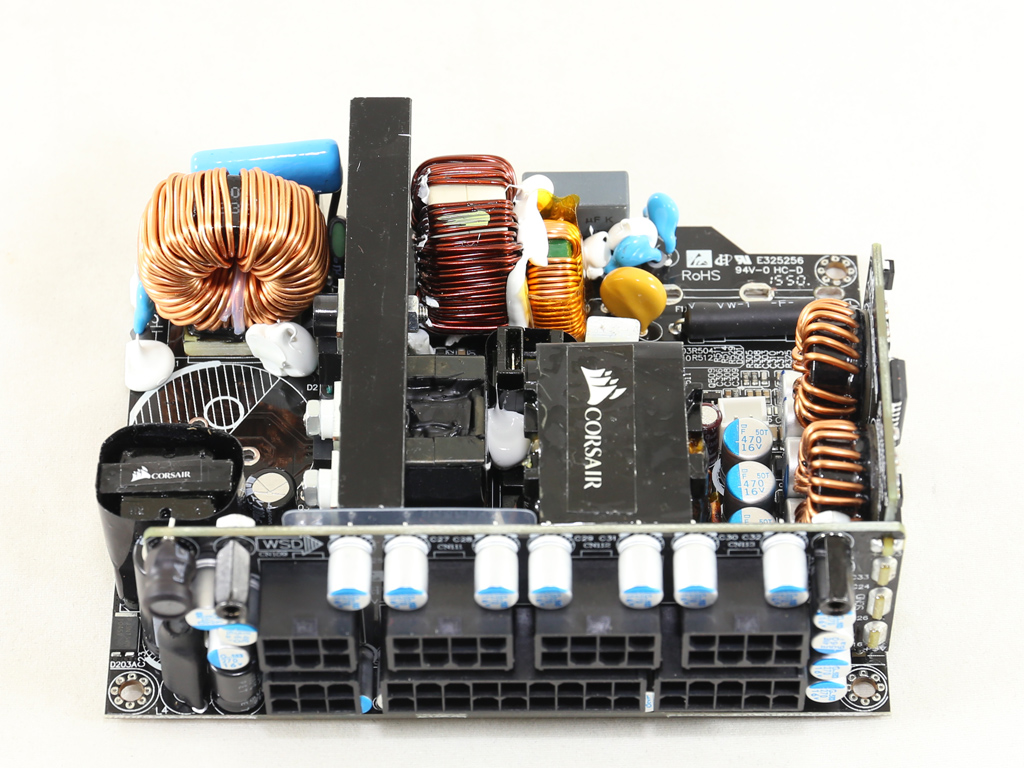
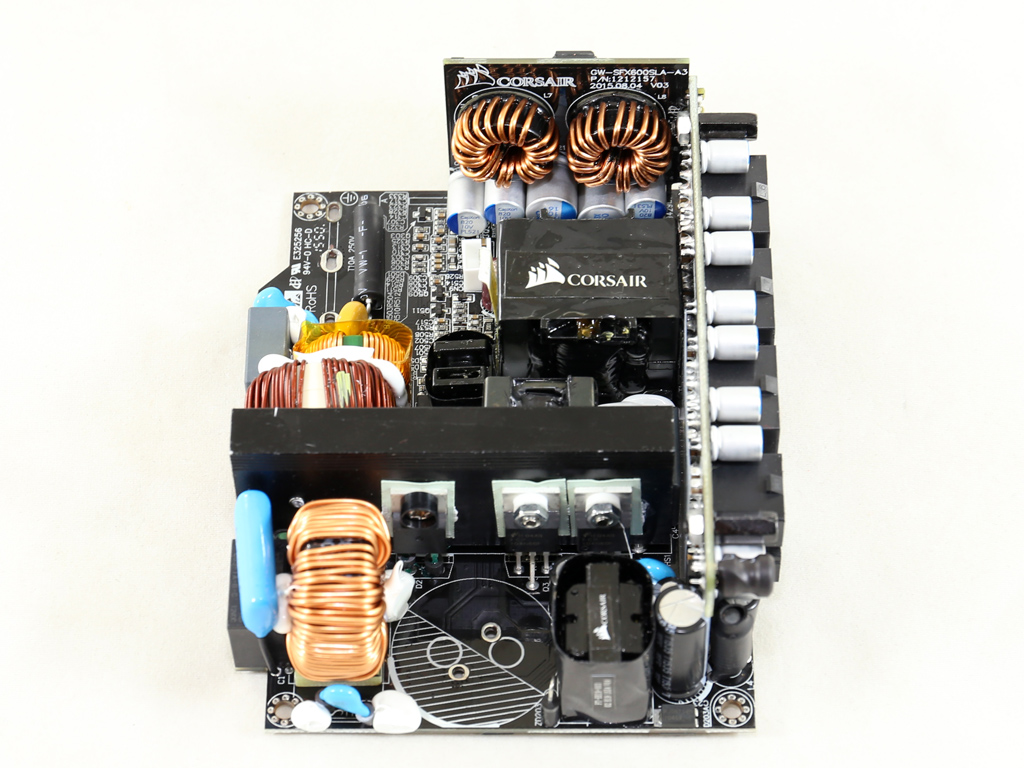
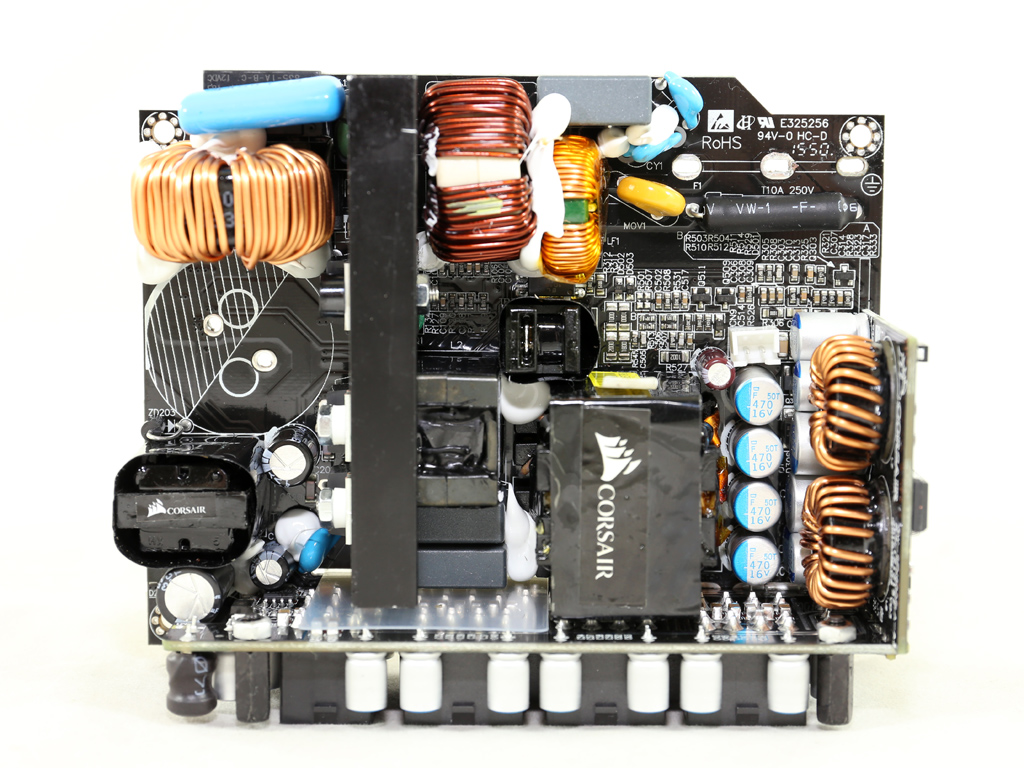
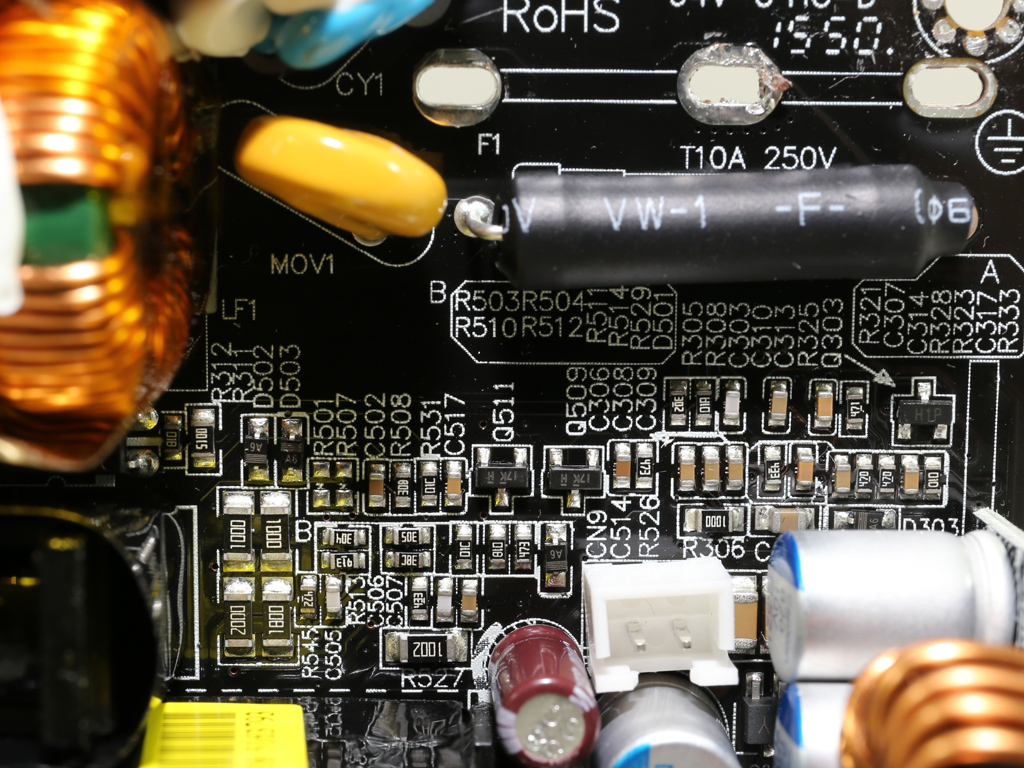
The new SF units are made by Great Wall, a manufacturer that also builds Corsair's CS line. This OEM has proven that it can build good PSUs, and that's exactly the case here. Inside the SF450, we find high-quality components and a modern design. There's an LLC resonant converter on the primary side and synchronous rectification on the secondary side, where the FETs that regulate the +12V rail are installed on the solder side of the mainboard and cooled by the chassis. There is one large heat sink on the primary side that looks beefy enough to support this unit's semi-passive mode. As you might expect from a compact PSU, the double-sided PCB is densely populated with components.
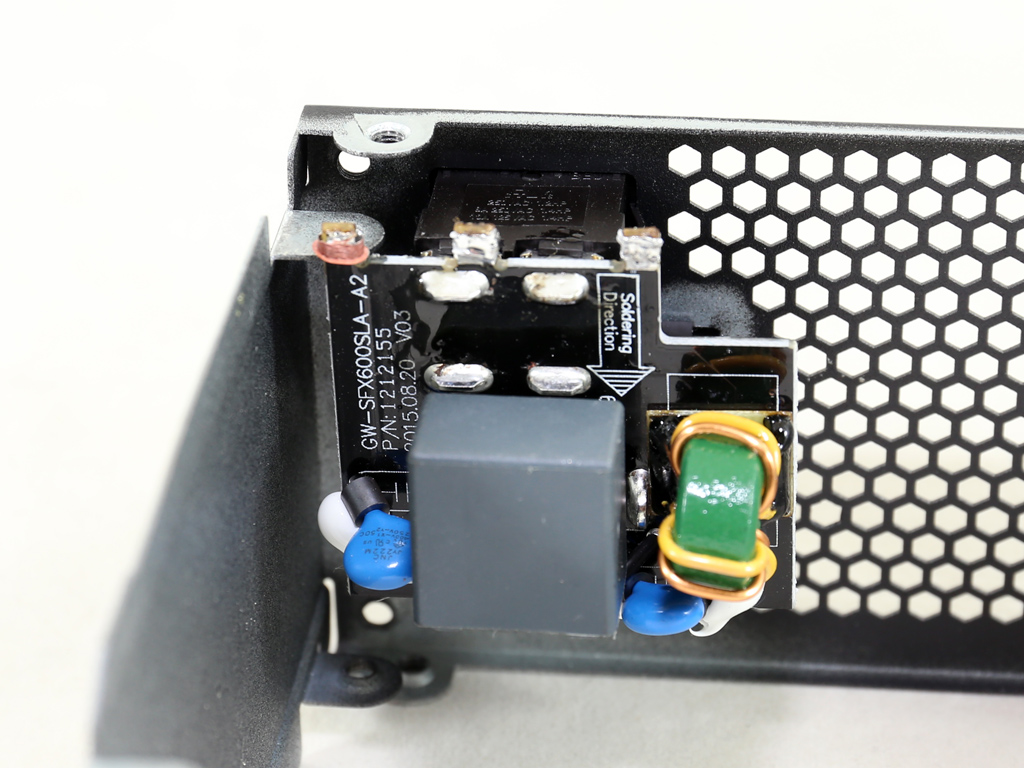
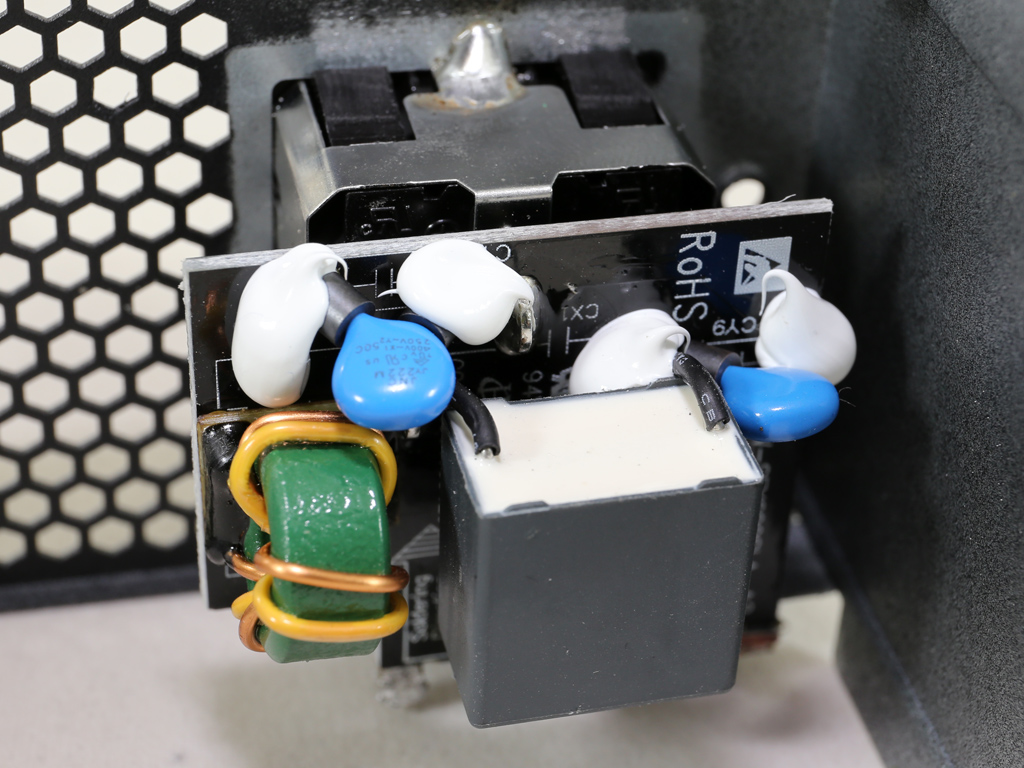
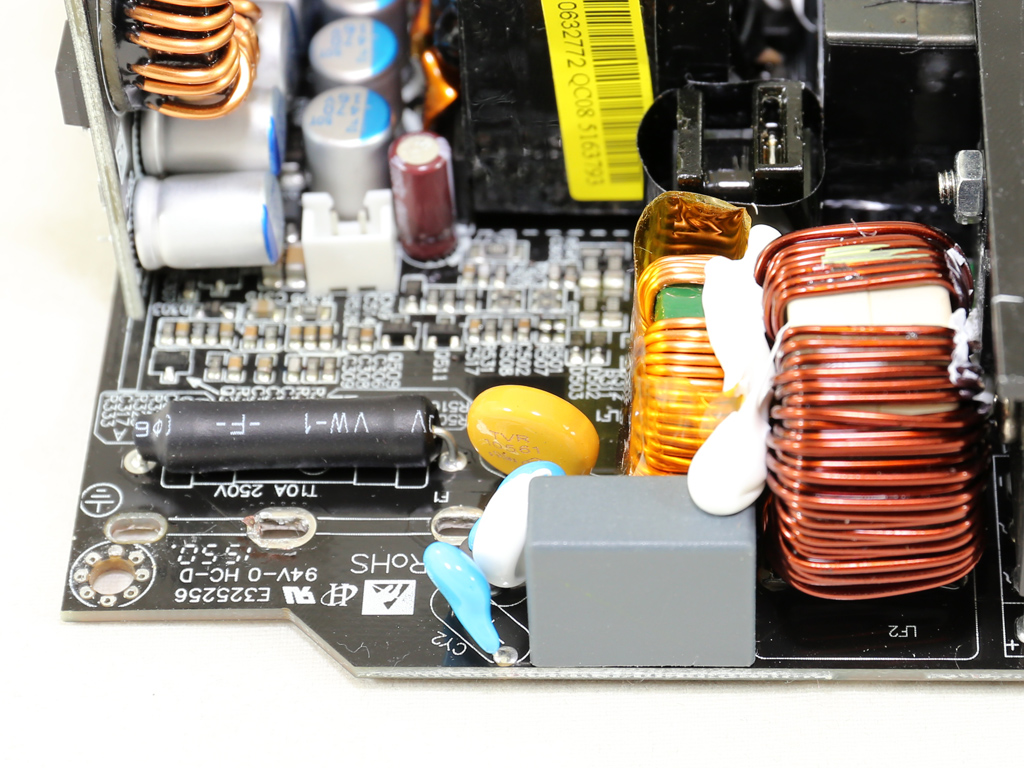
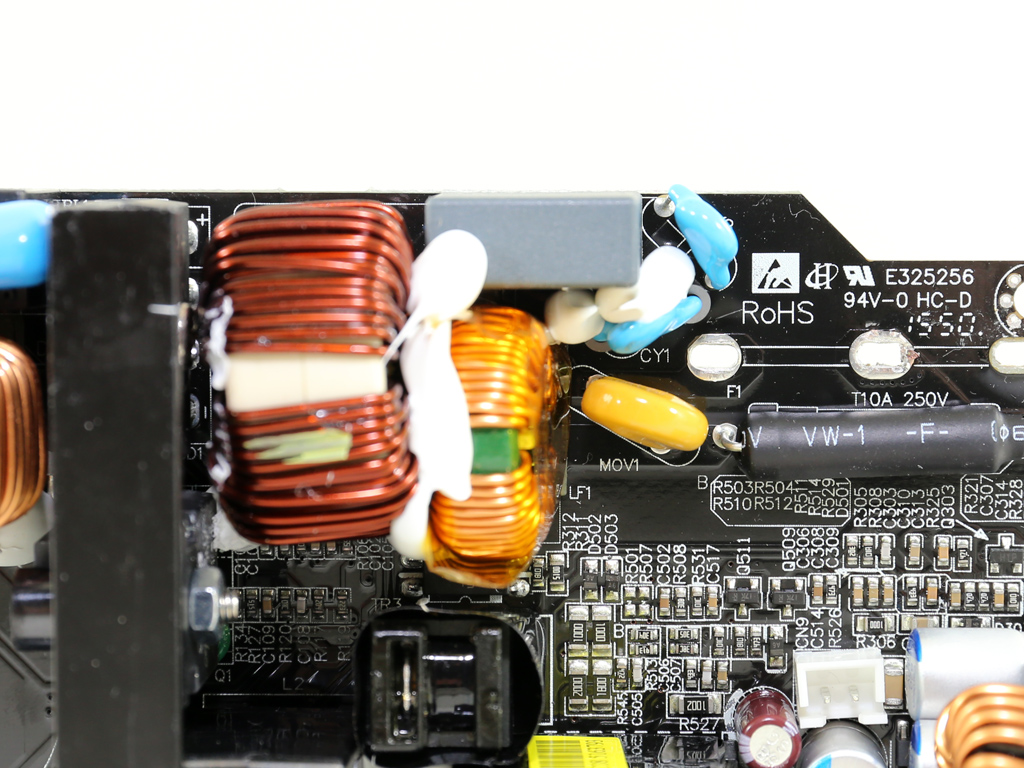
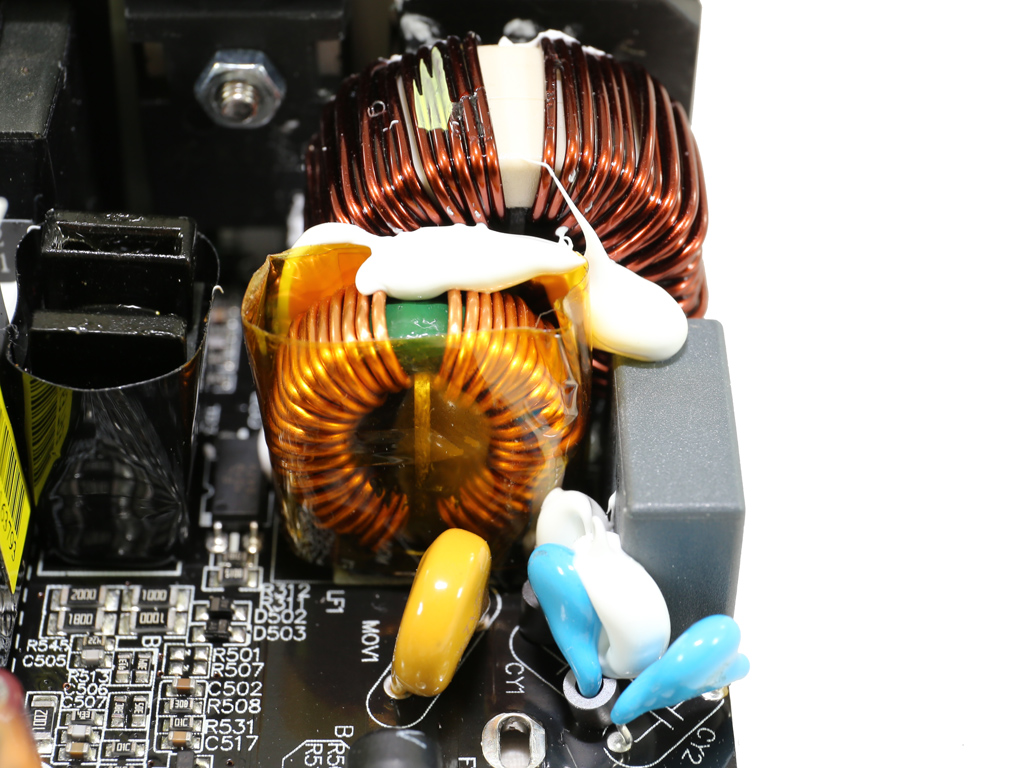
The AC receptacle is installed on a small PCB that also hosts the first part of the EMI filter, including two Y caps, a single X one and a CM choke. As usual, the second part of this filter is hosted on the main PCB and consists of two Y and a single X caps, two CM chokes and an MOV. The EMI filter is complete.
Right under the PFC input capacitor, responsible for filtering the high-frequency ripple that the bridge rectifier creates, is an electromagnetic relay used to bypass the NTC thermistor. This component provides protection against large inrush currents. The thermistor is located between the relay and the primary heat sink.
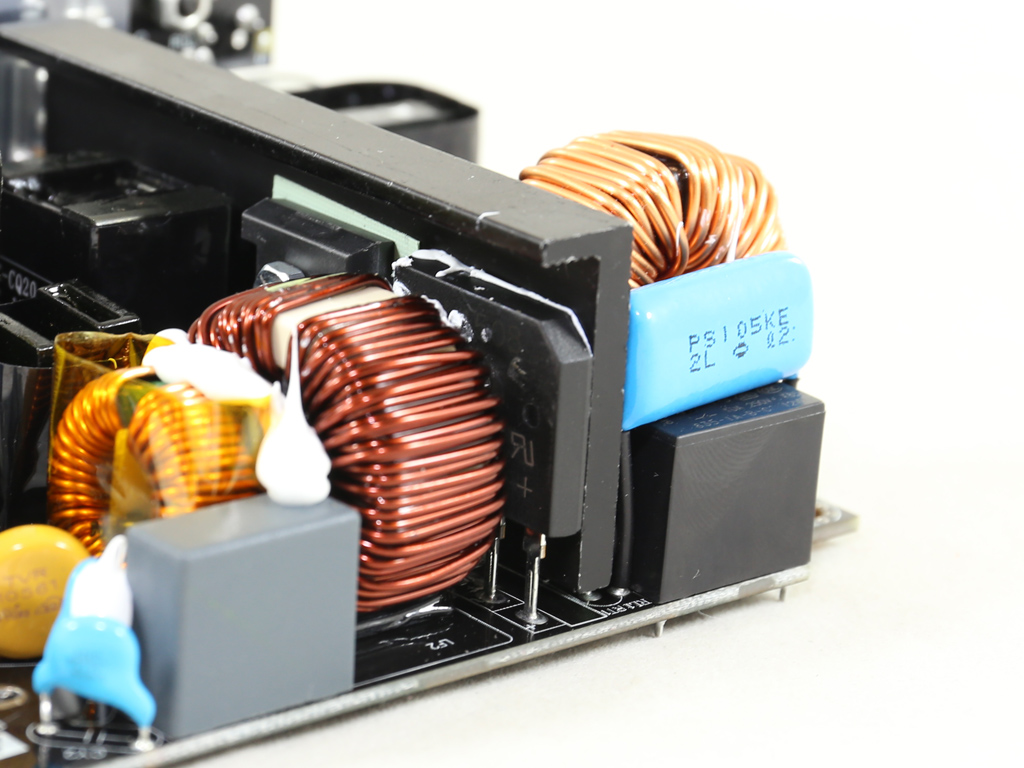
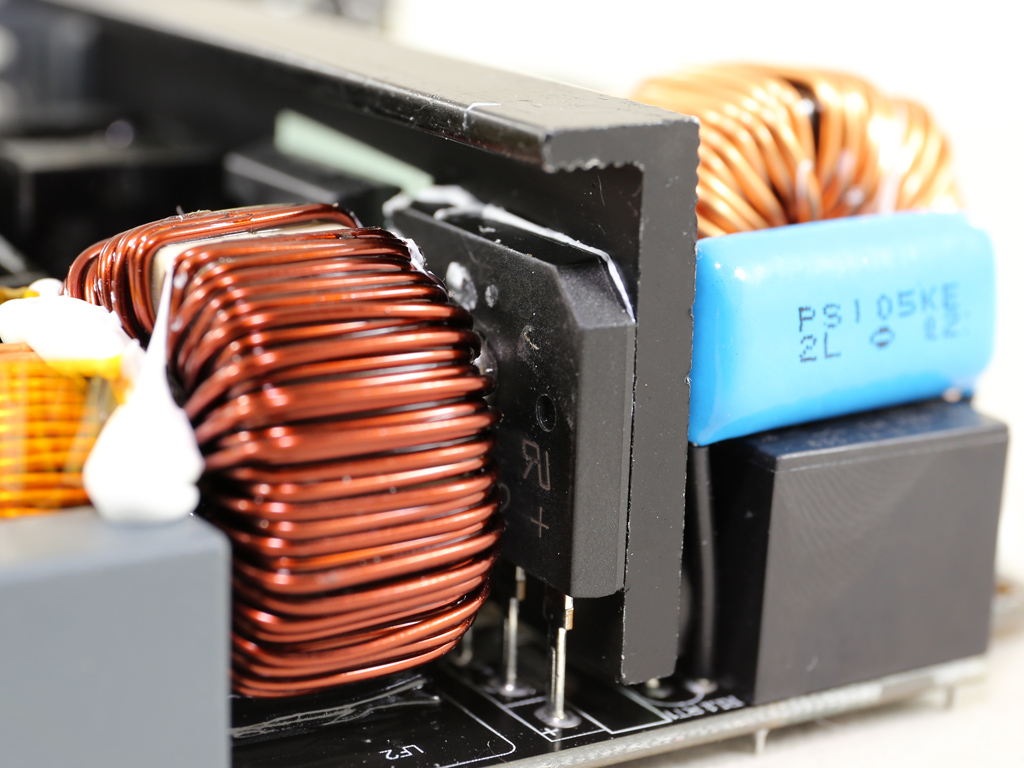
The single bridge rectifier is a GBU1508, able to handle up to 15A of current.
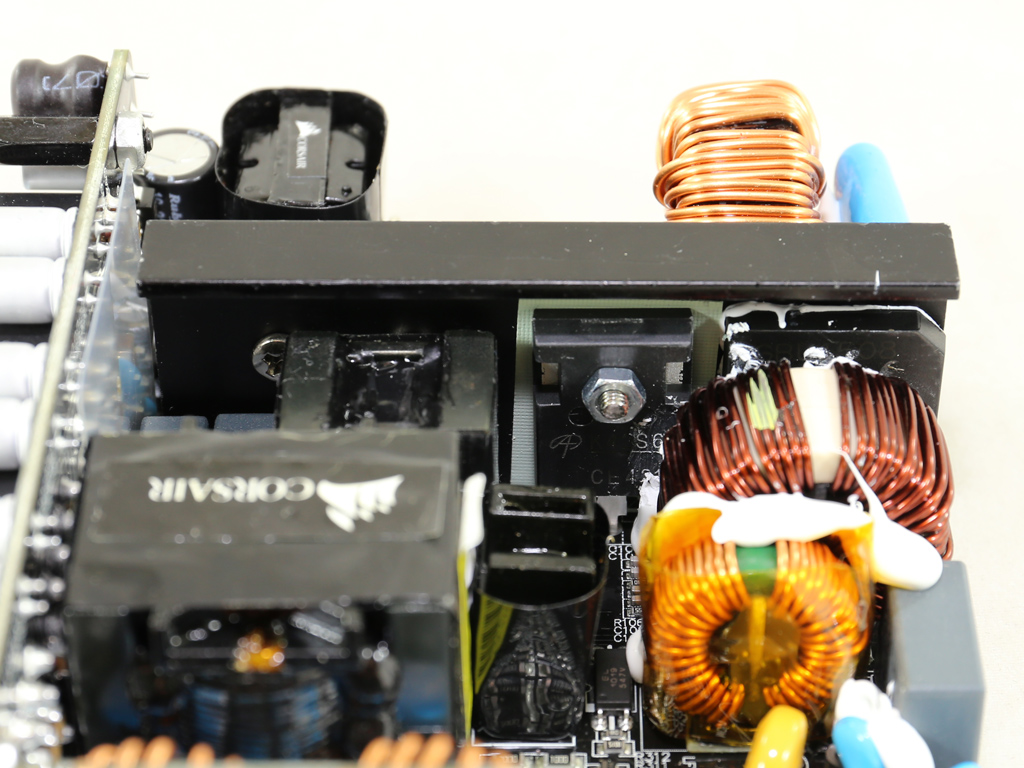
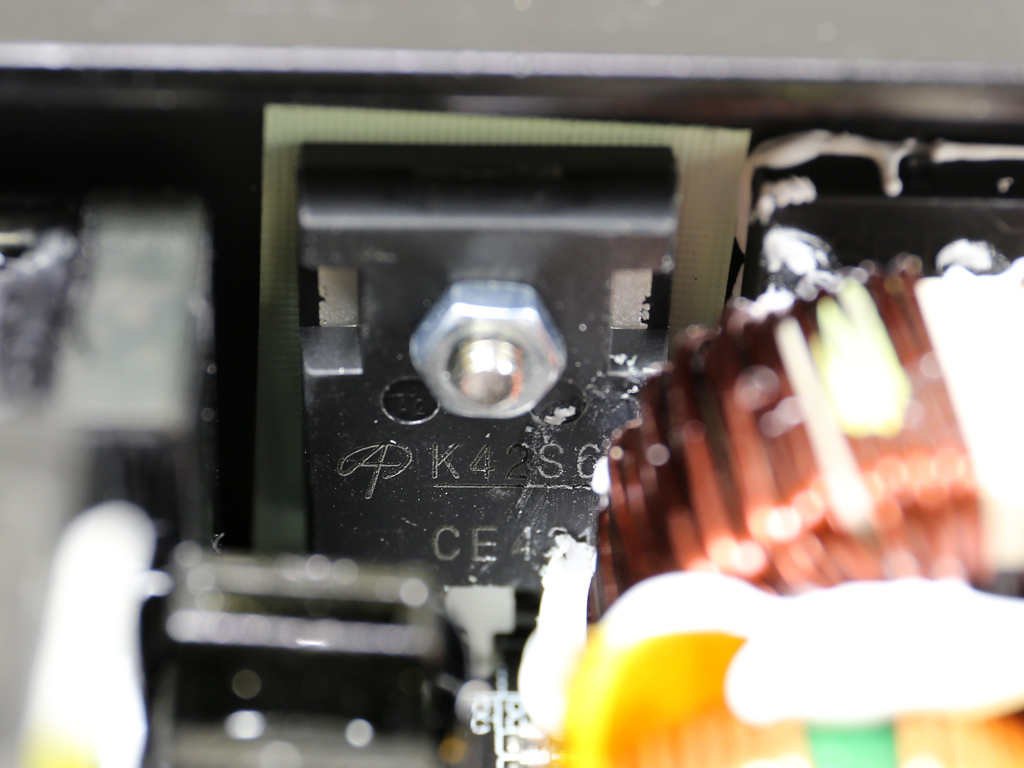
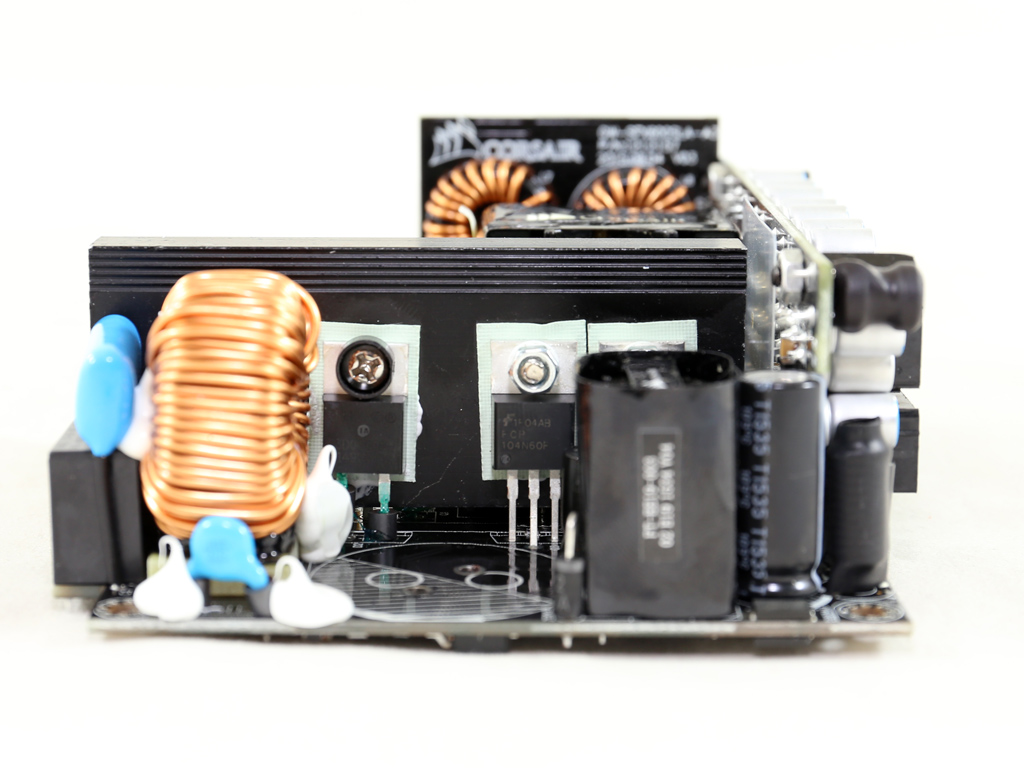
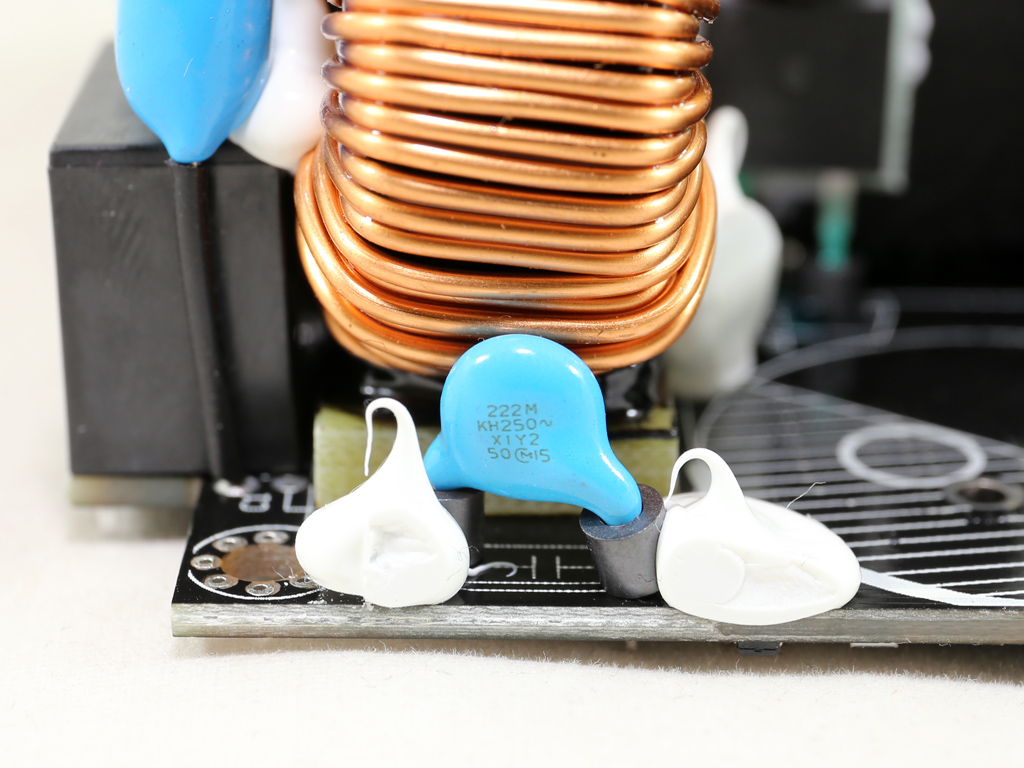
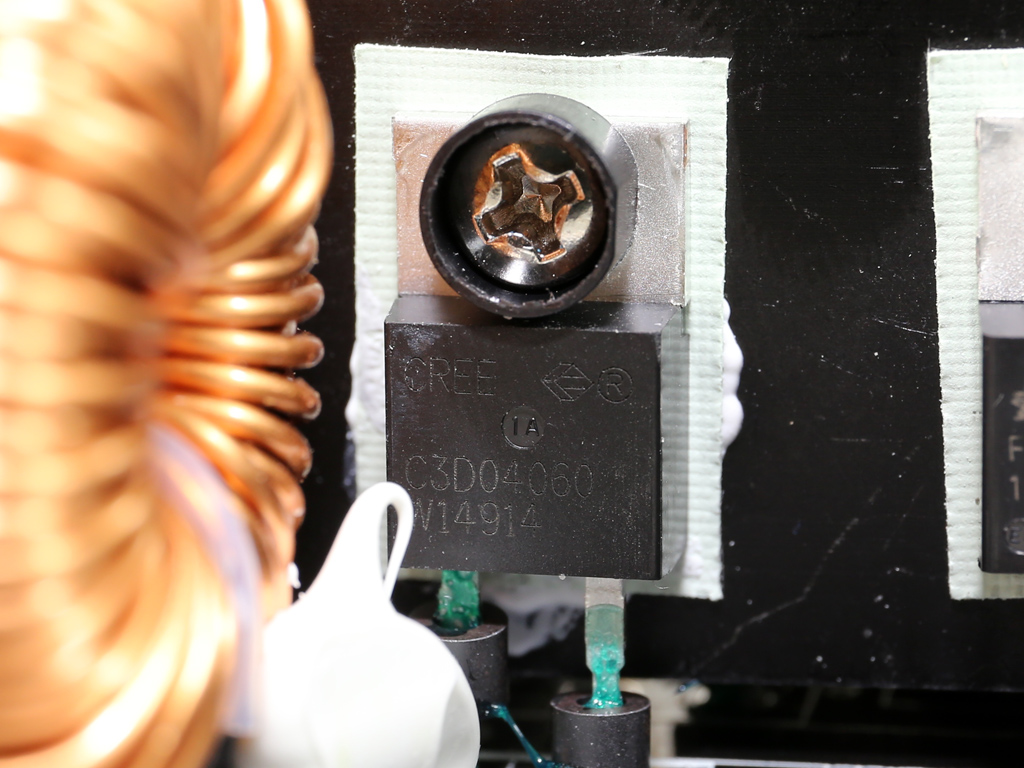
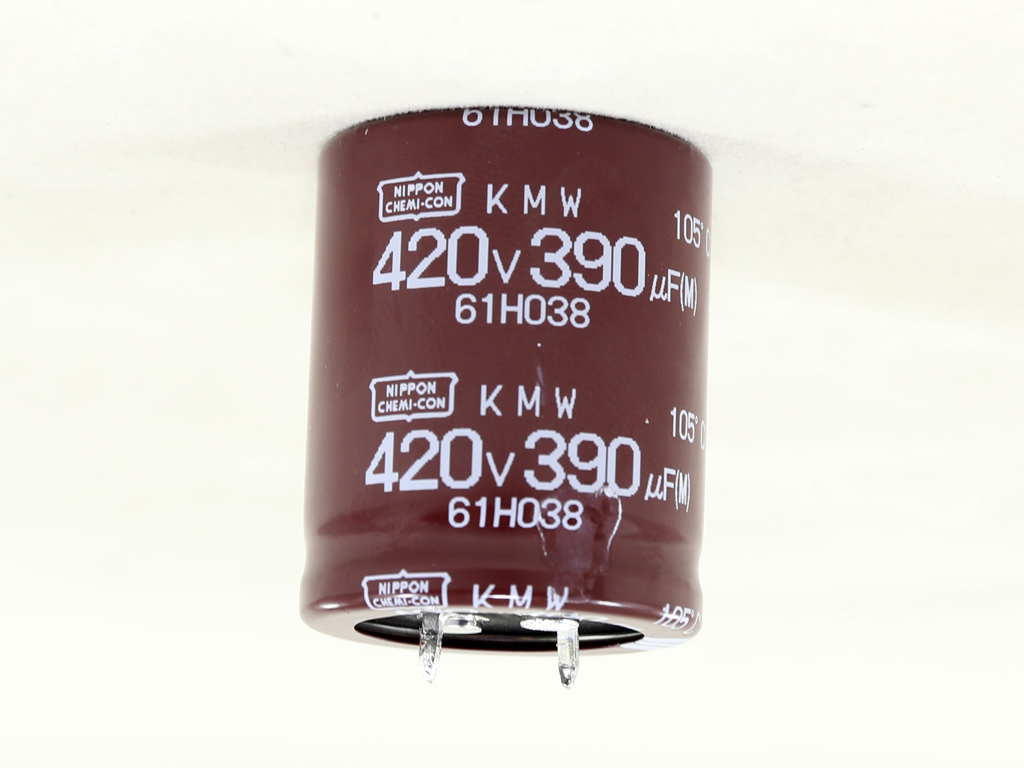
The APFC converter uses a single Alpha & Omega AOK42S60 FET and a CREE C3D04060A boost diode. The bulk cap is provided by Chemi-Con (420V, 390uF, 2000h @ 105 °C, KMW), and it has enough capacity to offer a hold-up time that easily meets ATX spec's requirements.
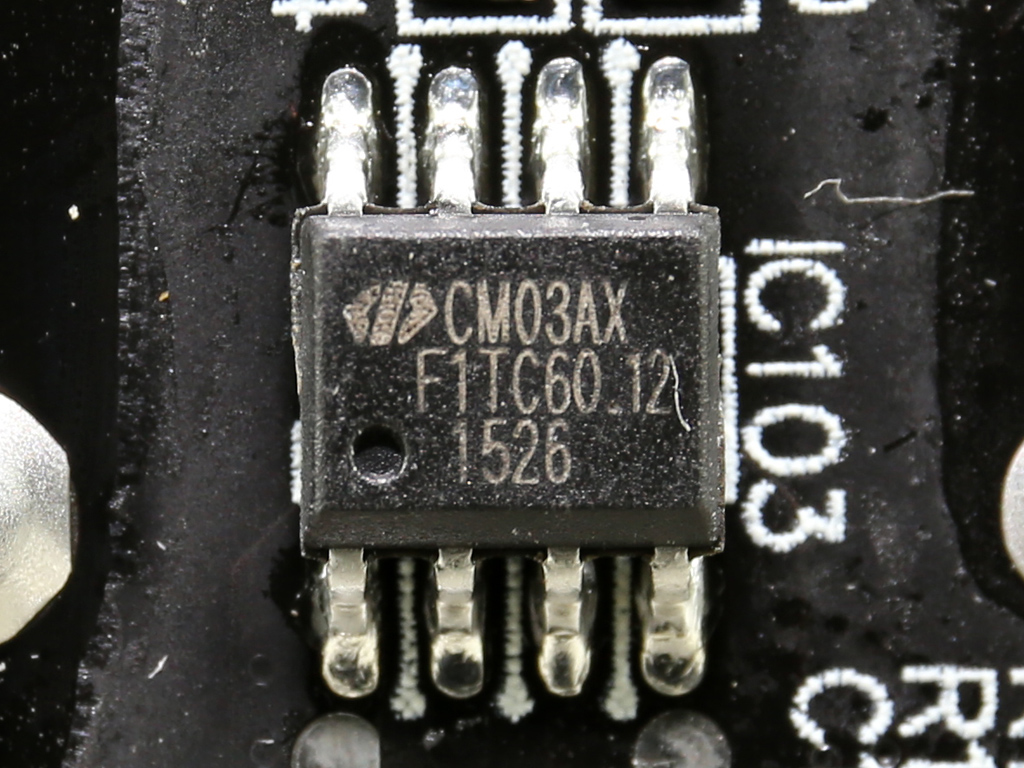
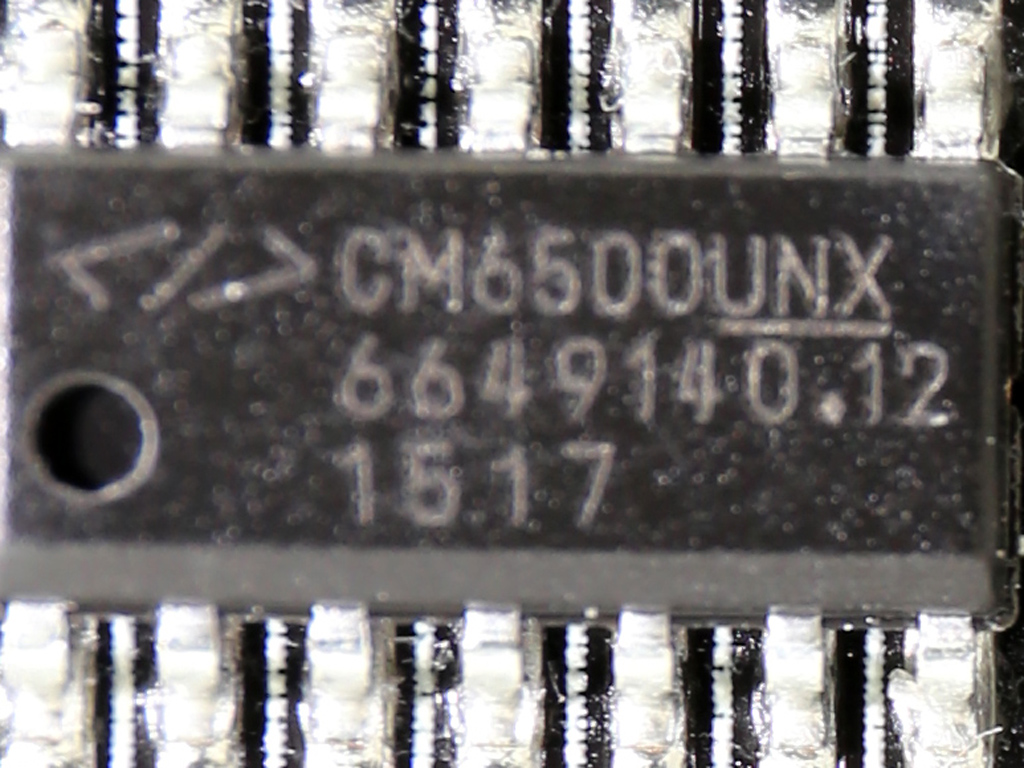
The APFC controller is a Champion CM6500UNX, which is also supported by a CM03X Green PFC controller. Both ICs are installed on the mainboard's solder side.
Get Tom's Hardware's best news and in-depth reviews, straight to your inbox.
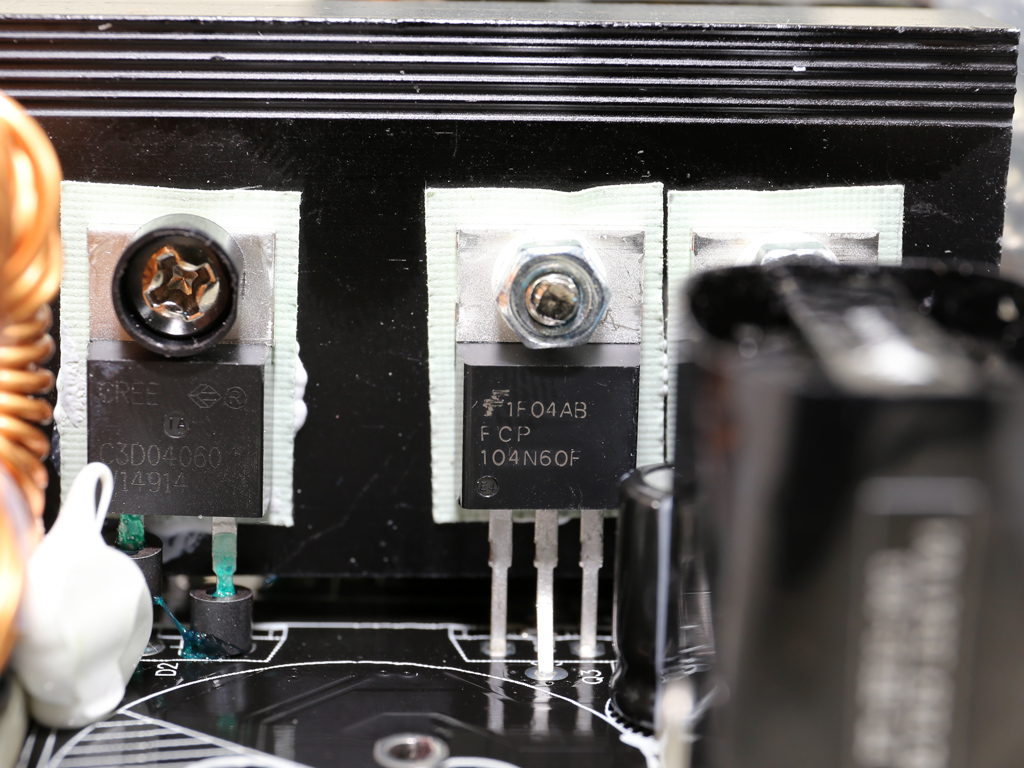
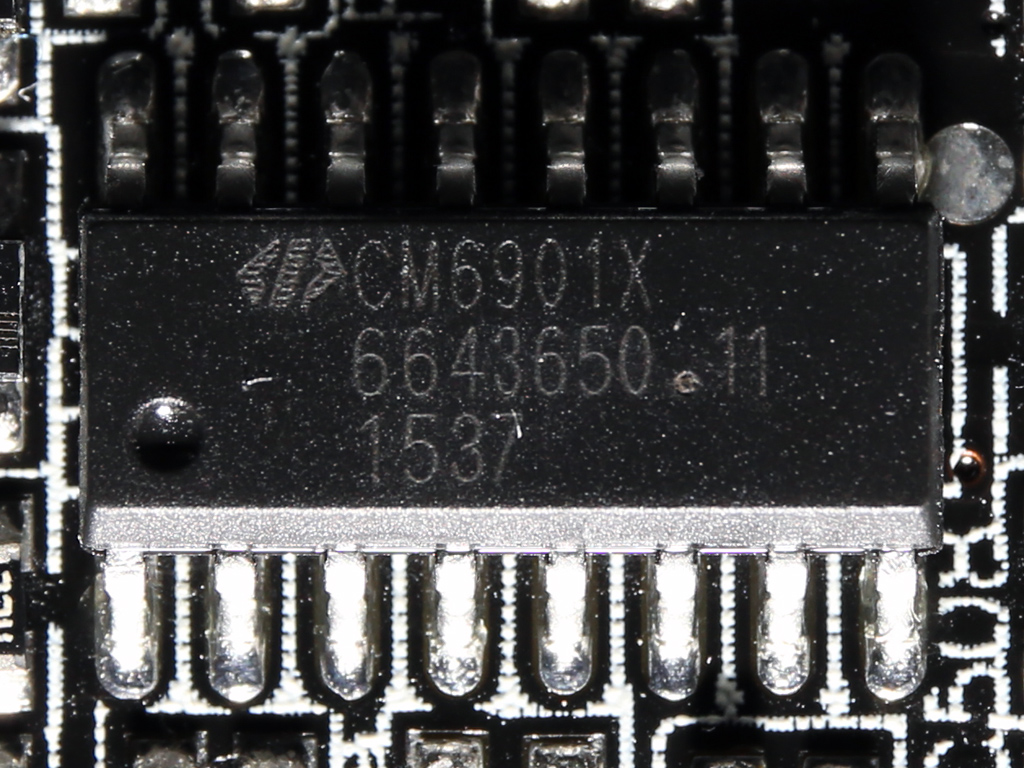
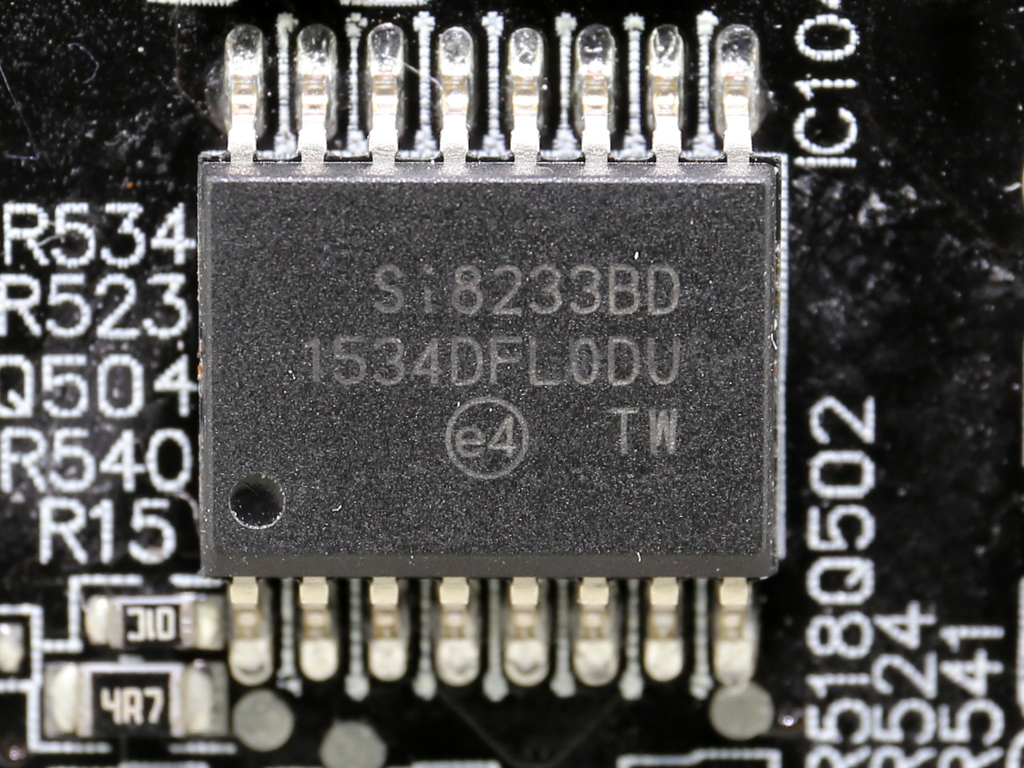
A couple of Fairchild FCP104N60F FETs are the primary switchers, arranged into a half-bridge topology (popular in high-efficiency PSUs). An LLC resonant converter is also used to boost efficiency through lossless switching. The resonant (and PWM) controller is a Champion CM6901, installed on the solder side of the mainboard along with a Si8233BD isolated driver. This driver is used by the main switching FETs, and it supports switching frequencies of up to 8MHz.
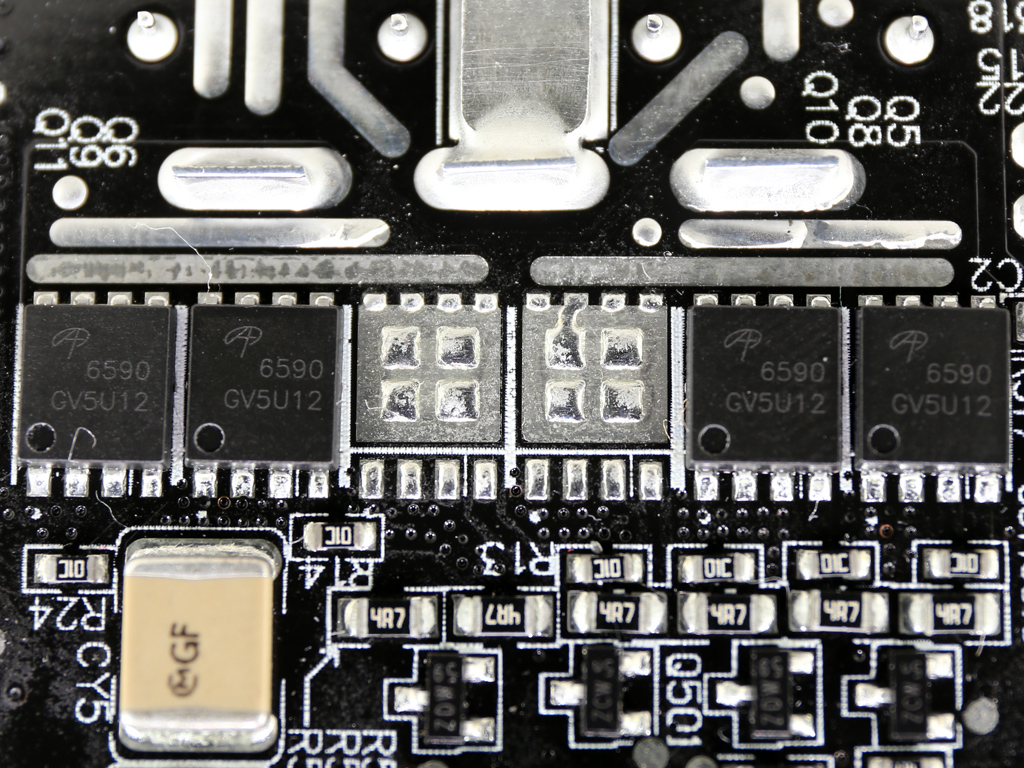

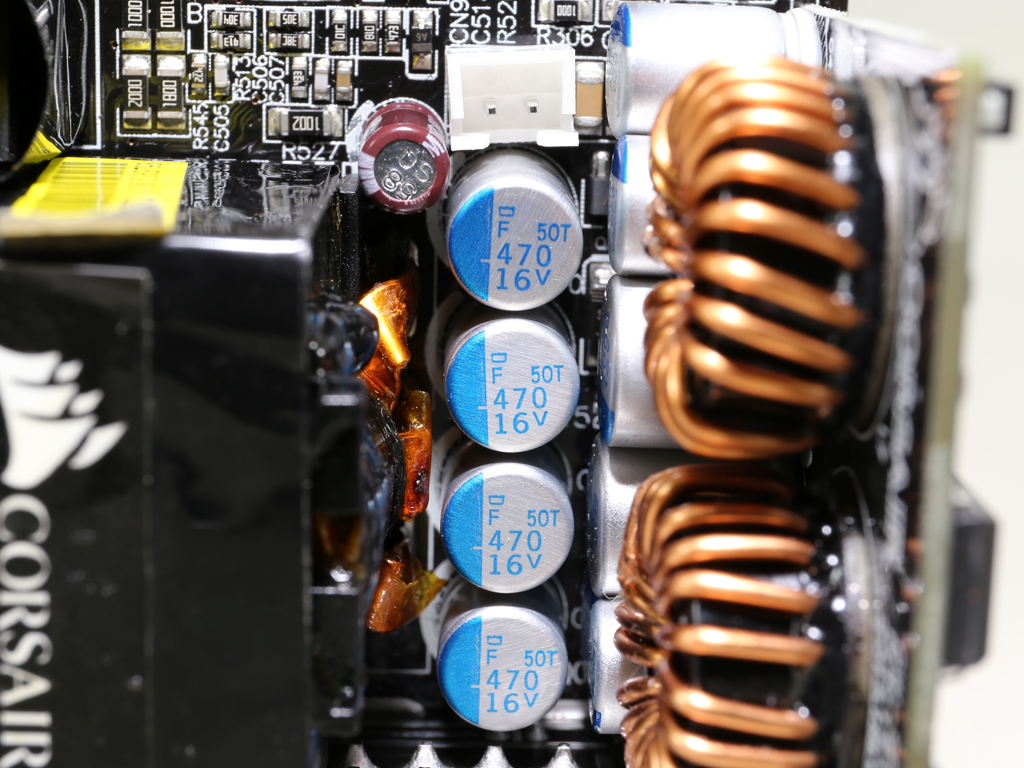
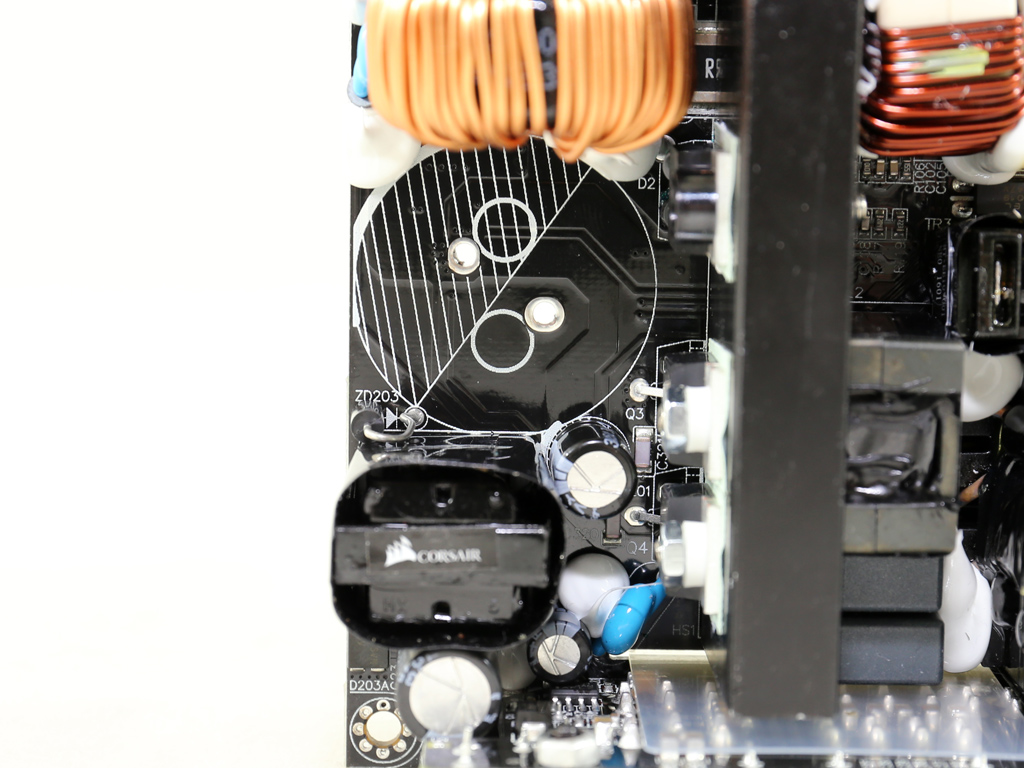
The +12V rail is regulated by four Alpha & Omega AON6590 FETs, which are clearly overkill for a 450W PSU since each one can handle up to 100A at 100 °C. The filtering of this rail is done mostly by high-quality Chemi-Con polymer caps. Besides a tiny Chemi-Con KMG electrolytic cap we also find three Rubycon ones. At least one of these Rubycons is used by the 5VSB circuit.
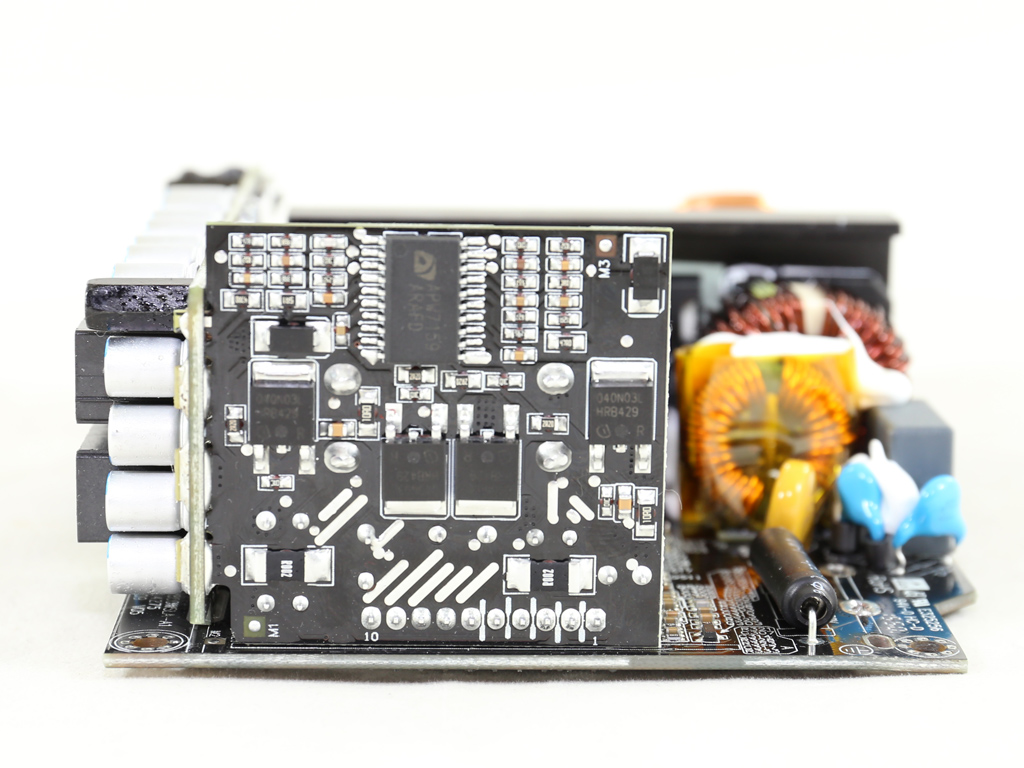

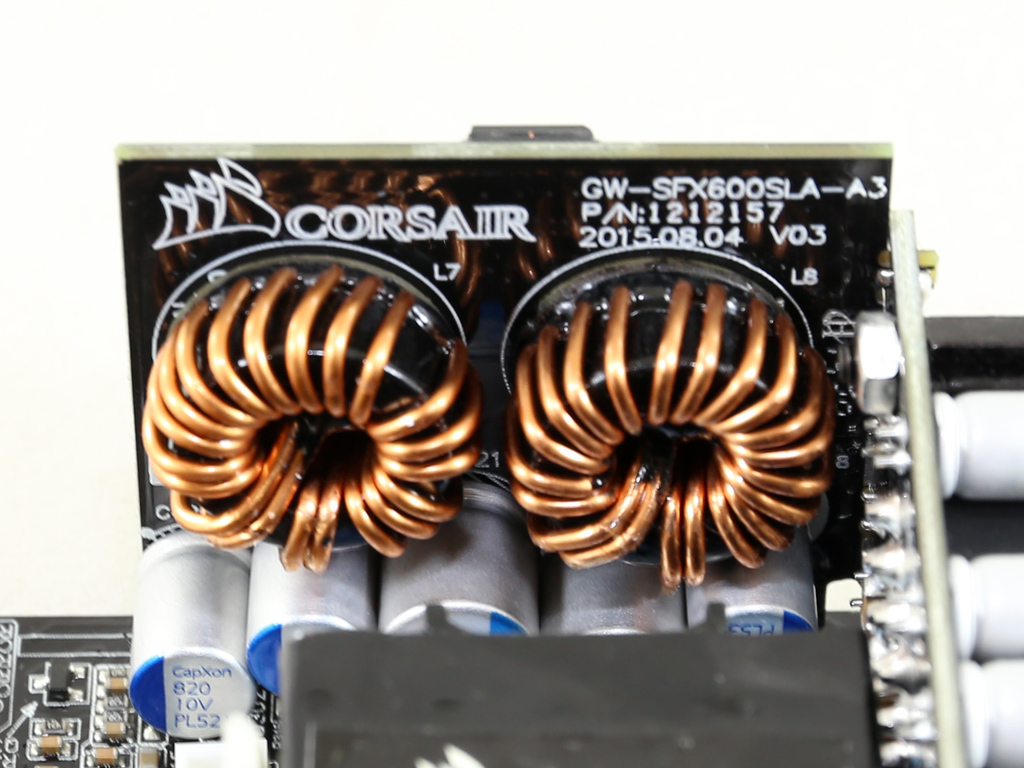
The minor rails are generated by a couple of DC-DC converters fed by the +12V rail. Each converter uses two Infineon BSZ040N04LS G FETs and the common PWM controller is an ANPEC APW7159. Several CapXon polymer caps are used for filtering these rails.
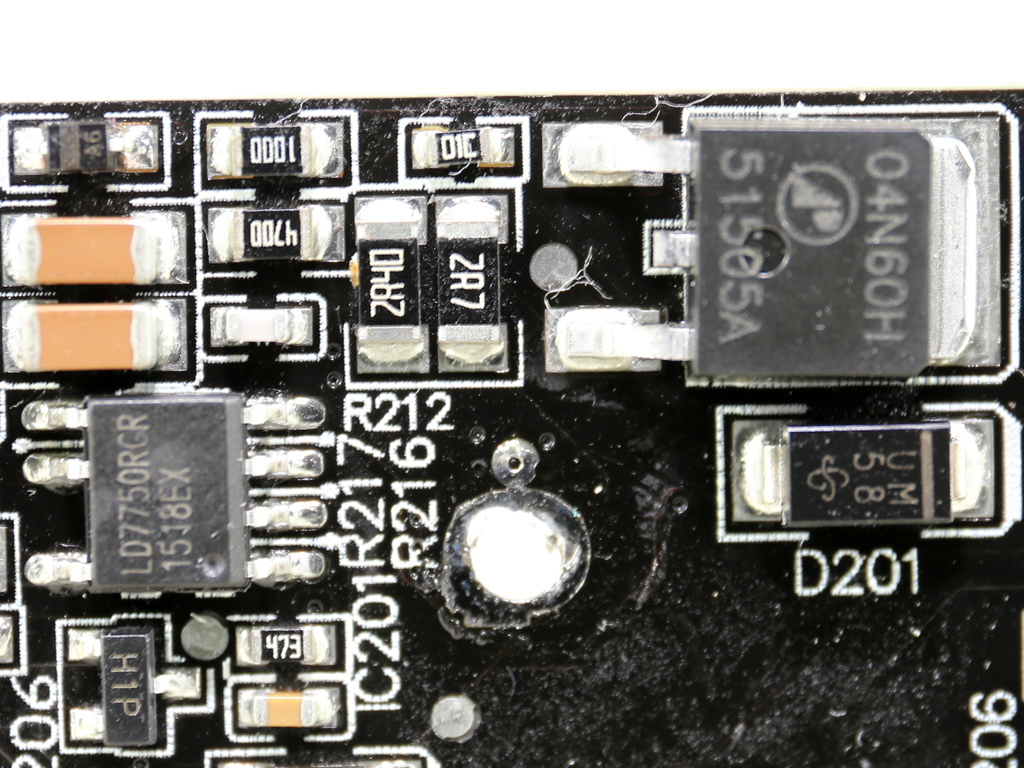
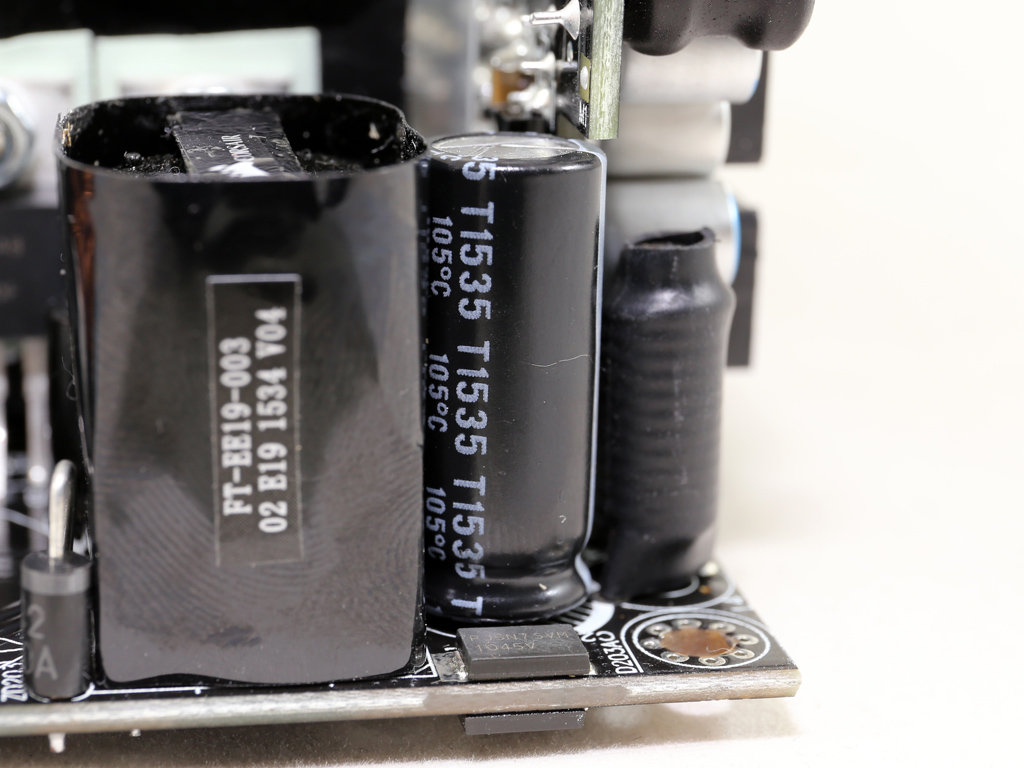
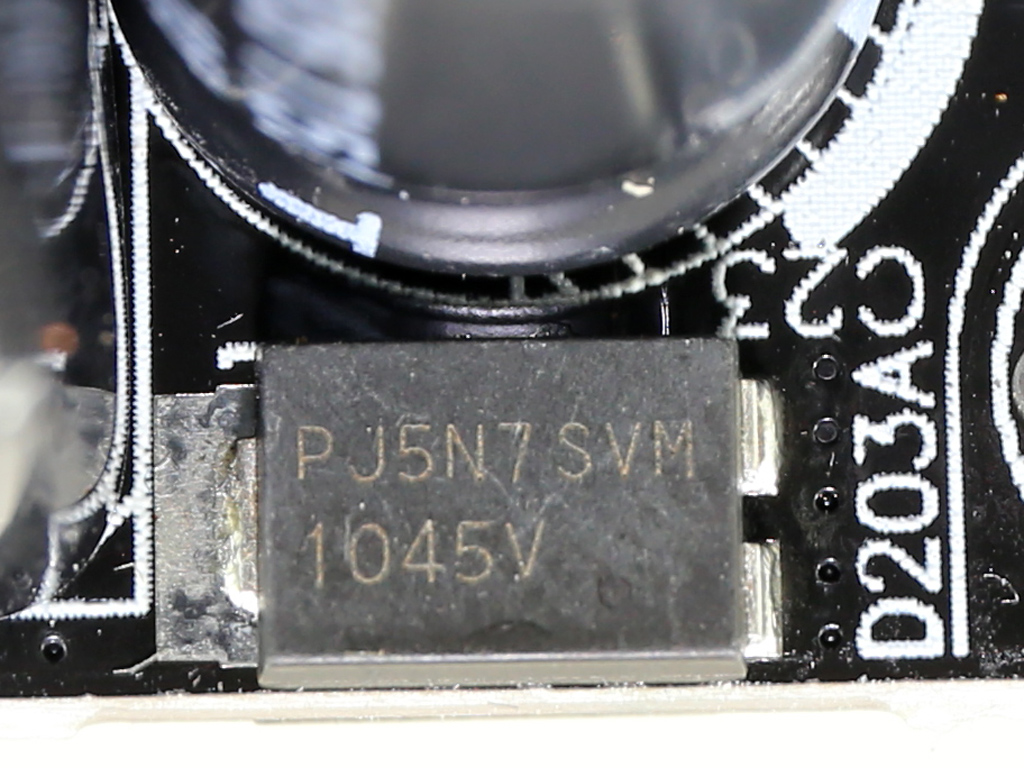
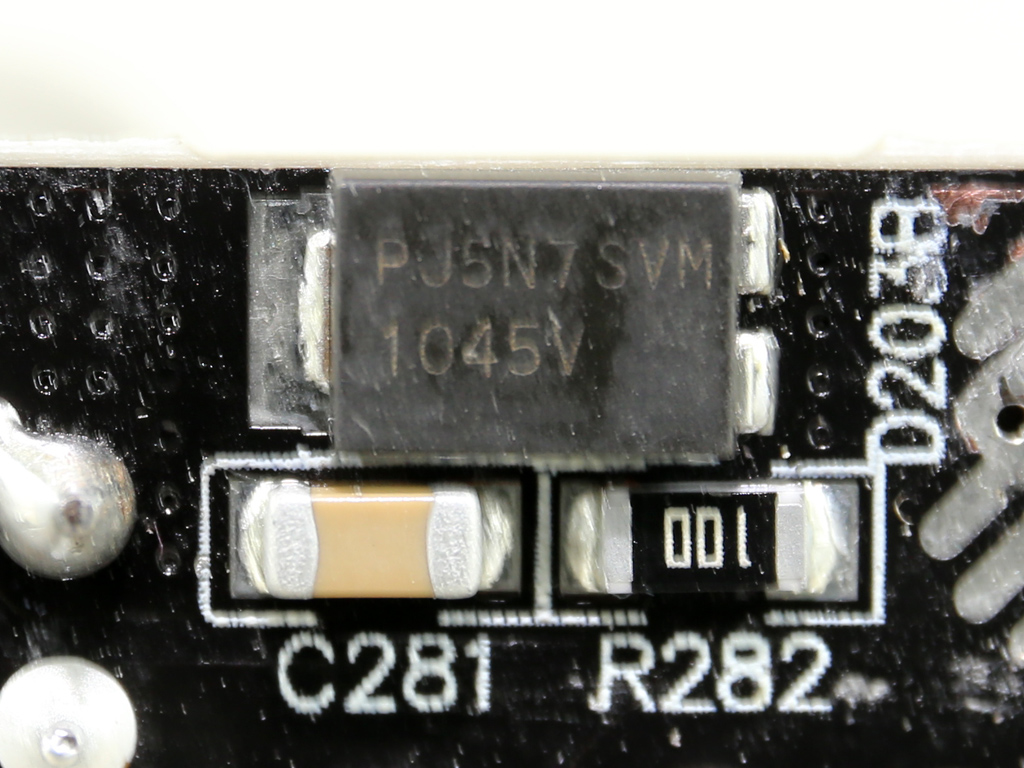
Near the 5VSB transformer are two SVM1045V SBRs, and on the mainboard's solder side we find a SVM1045V FET and the standby PWM controller, a Leadtrend LD7750RGR.
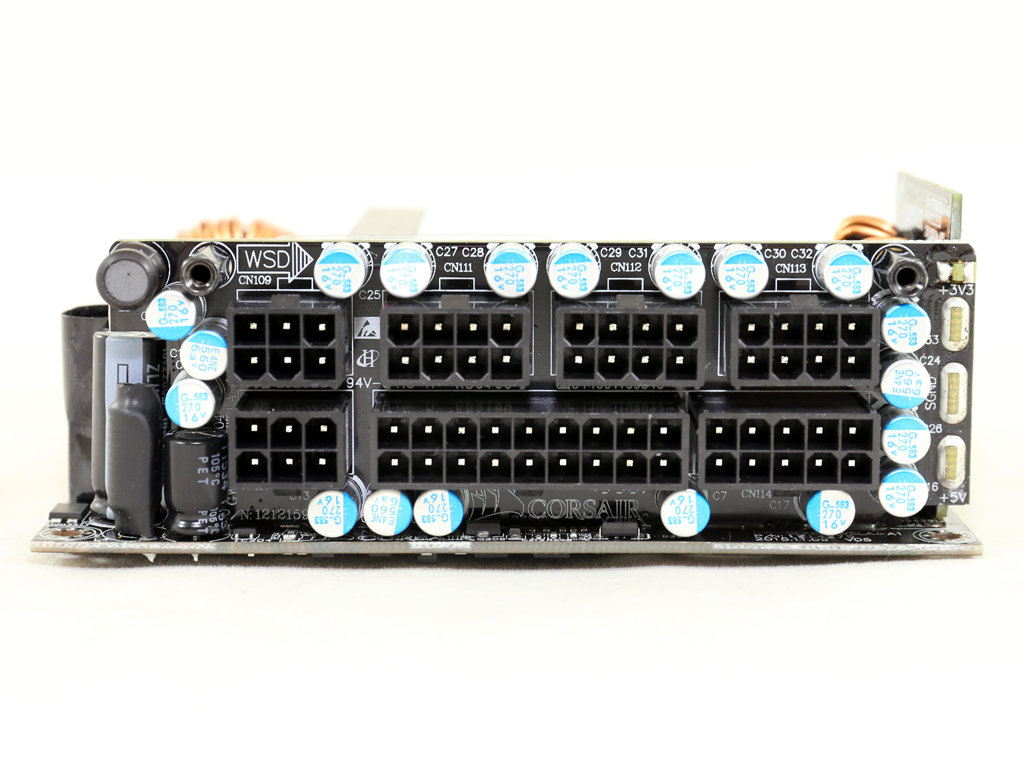
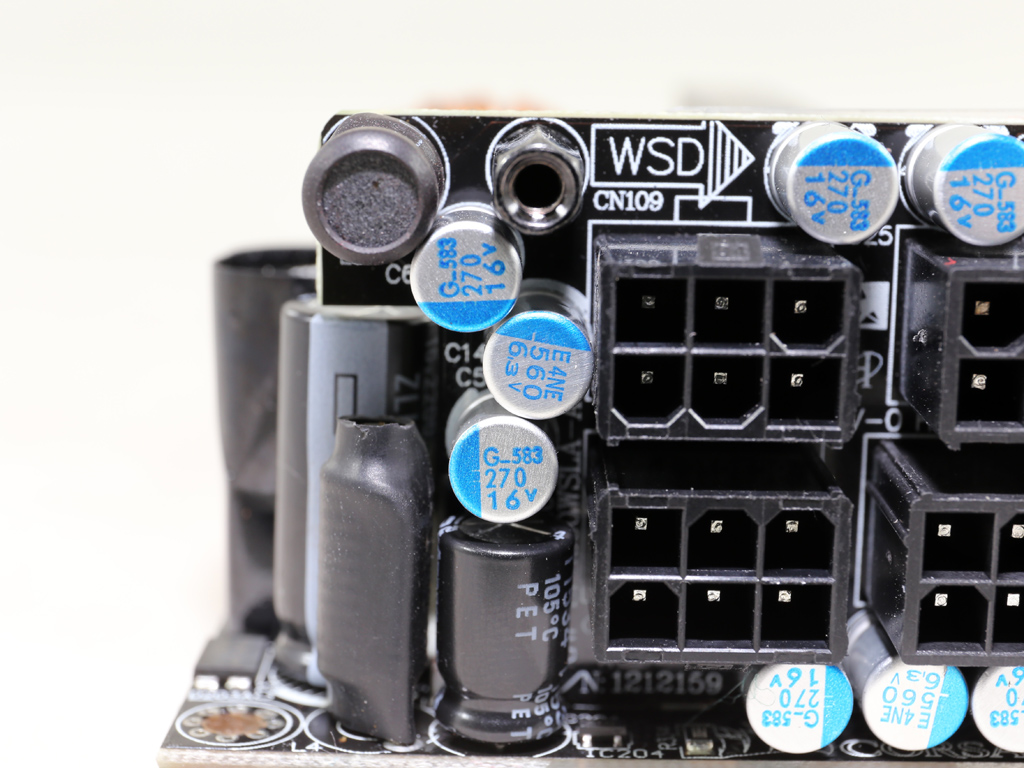
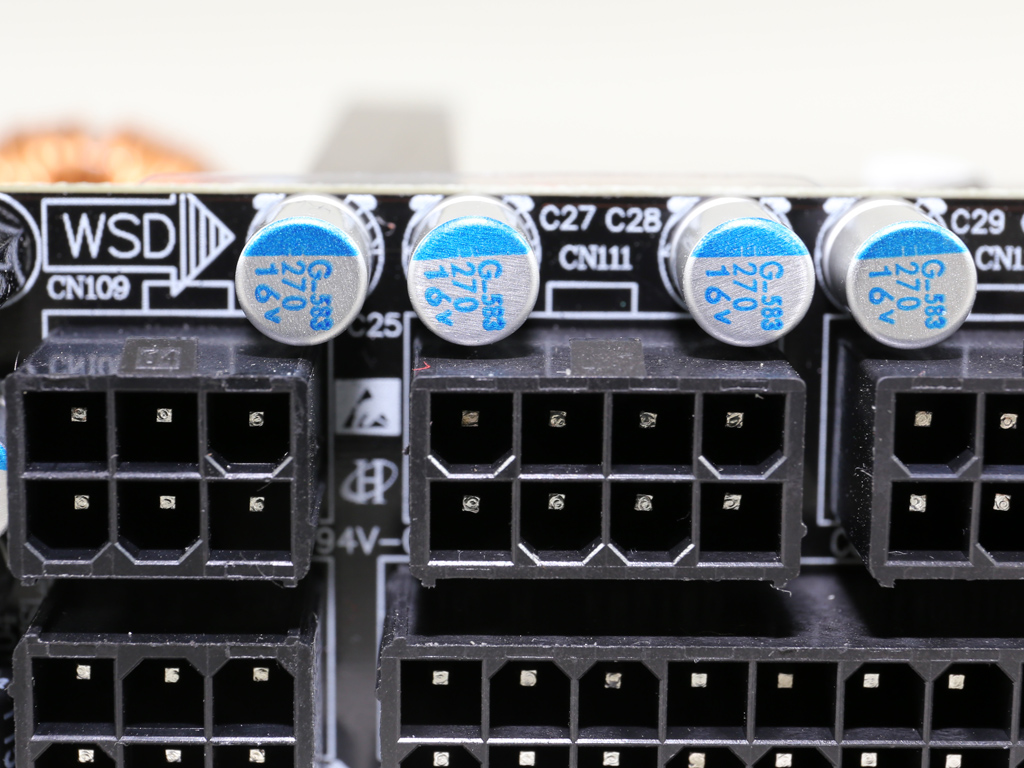
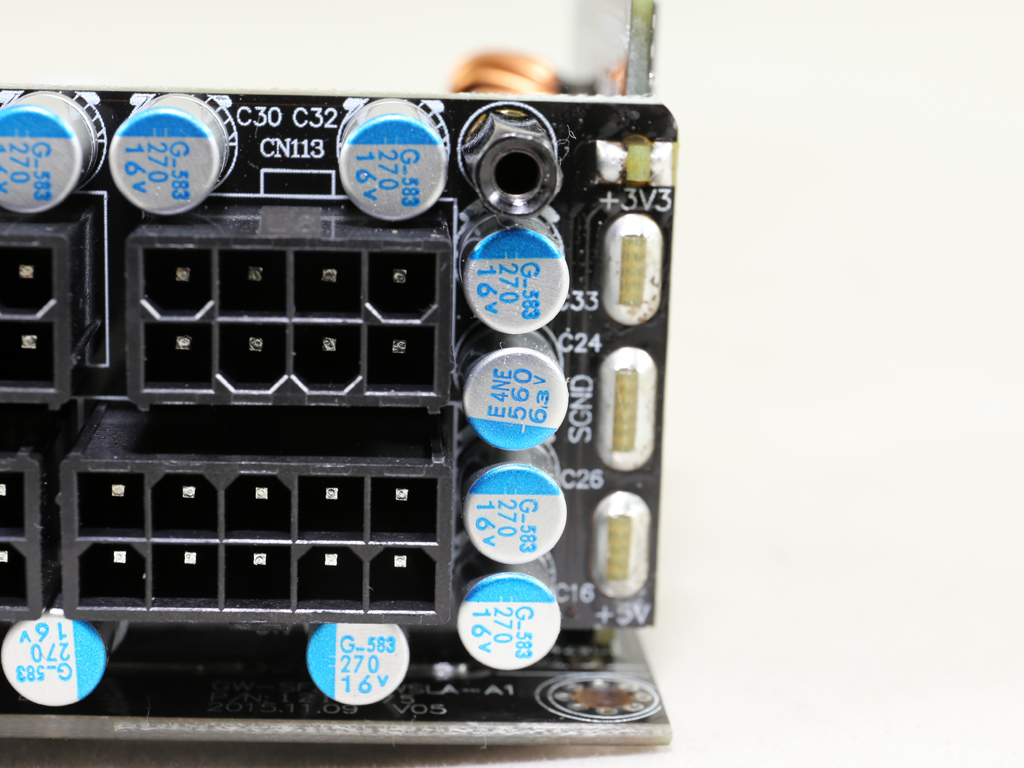
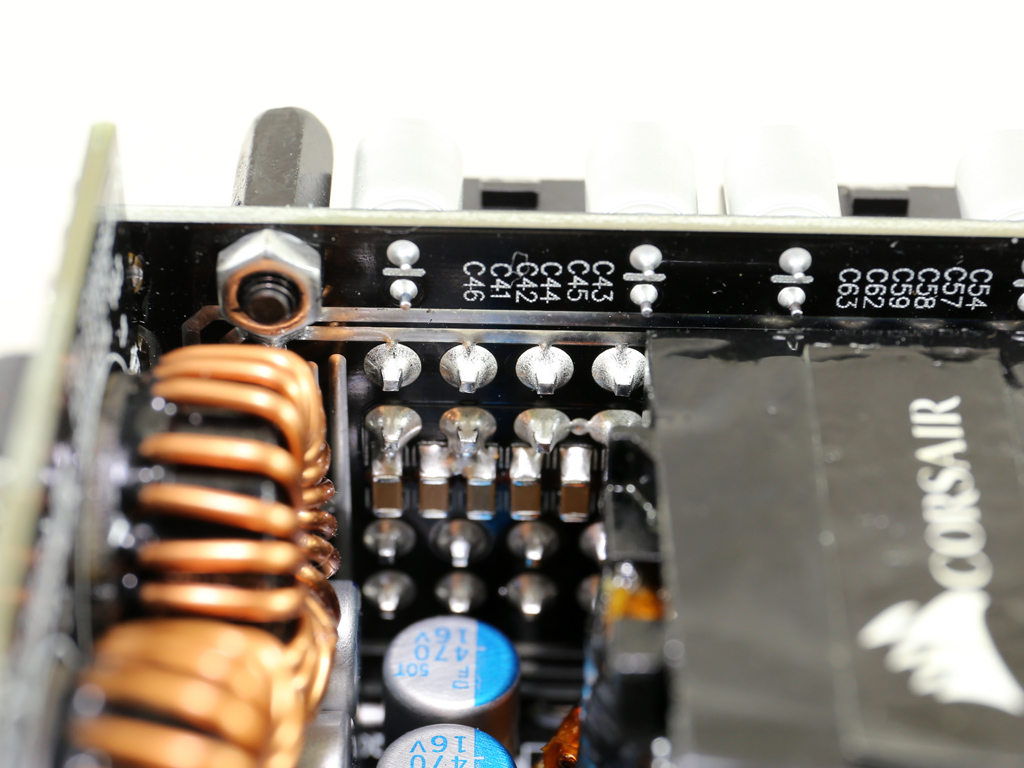
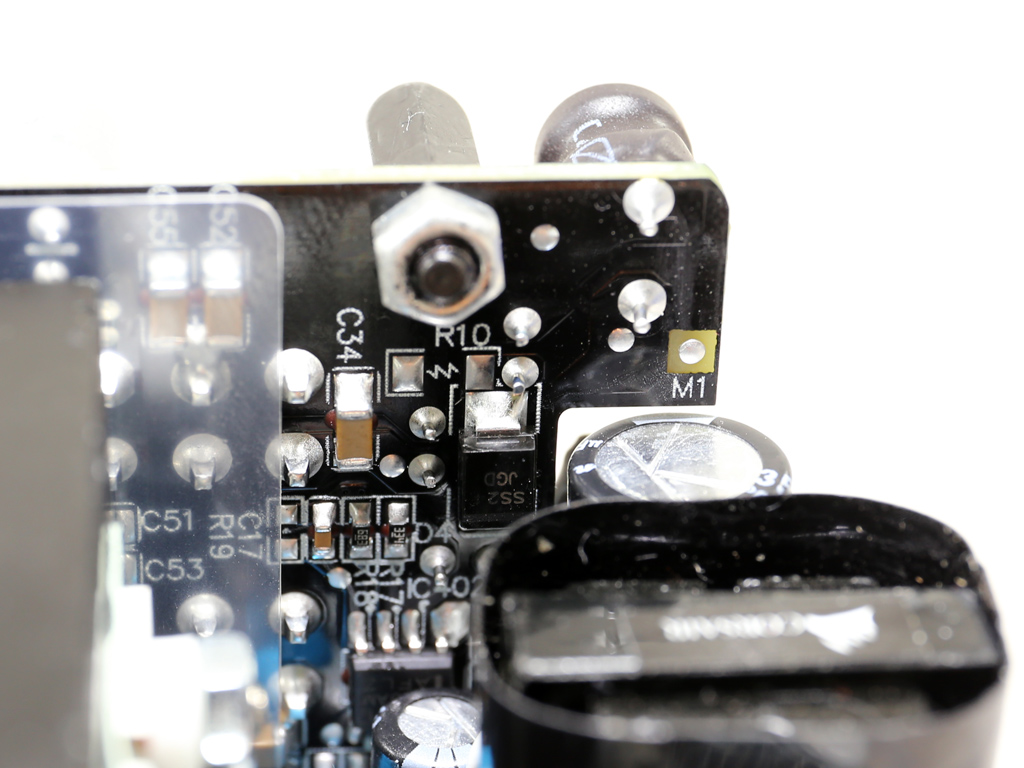
On the front side of the modular board, many polymer caps filter the PSU's outputs. Around back, a number of SMD components are installed.
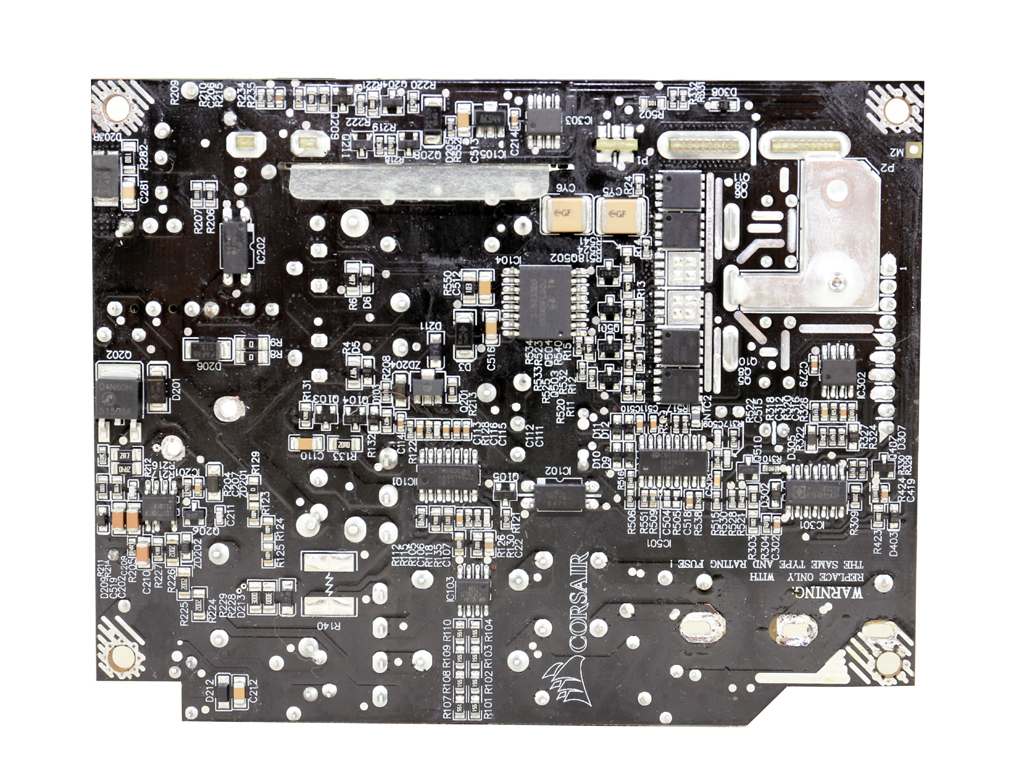
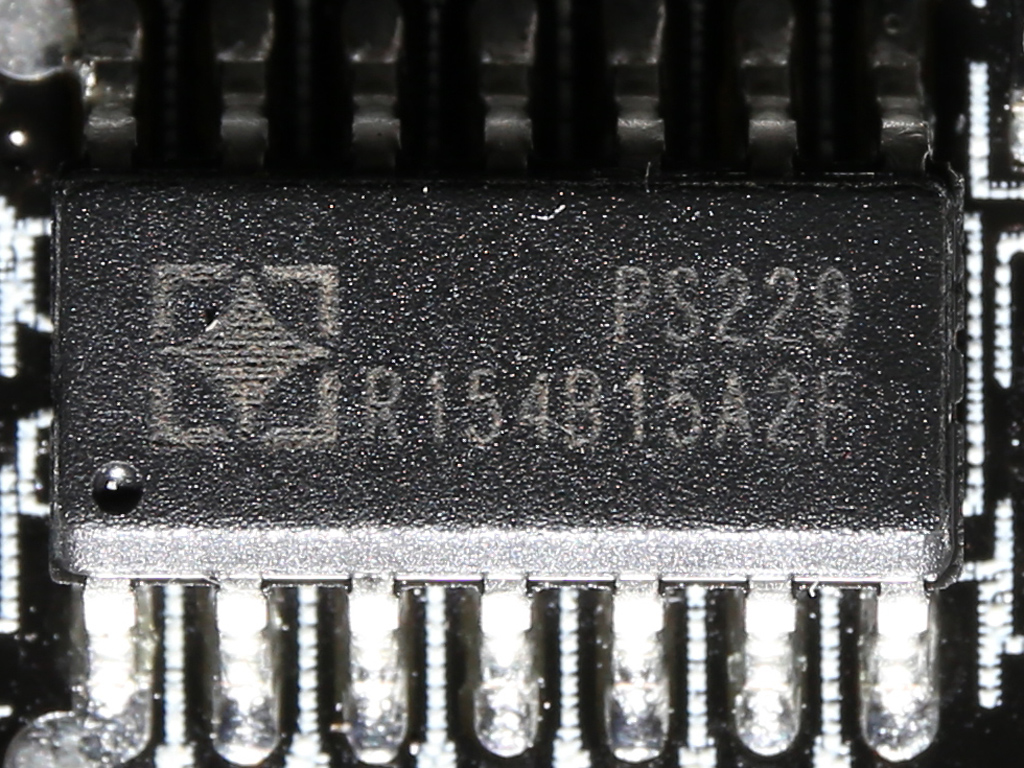
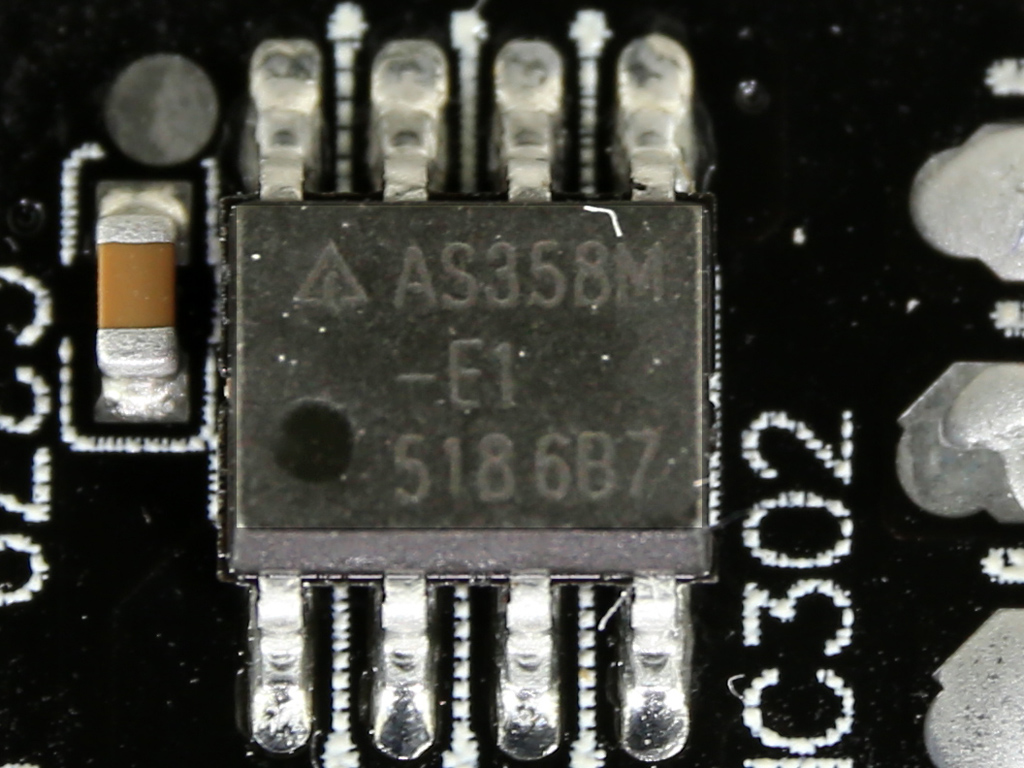
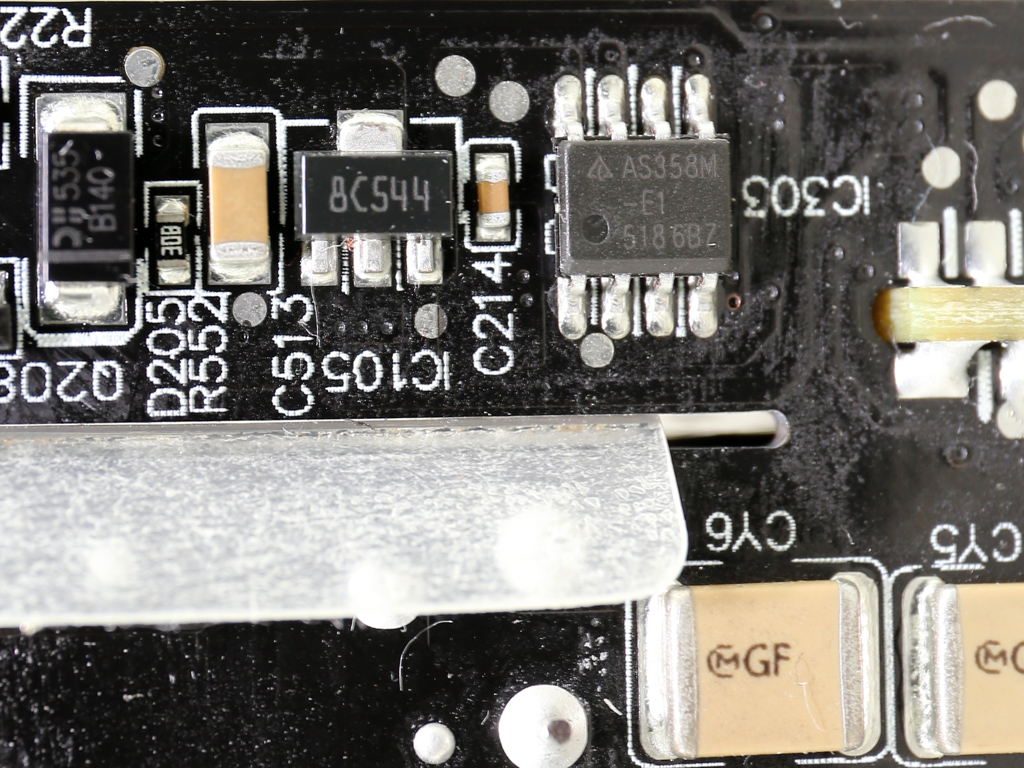
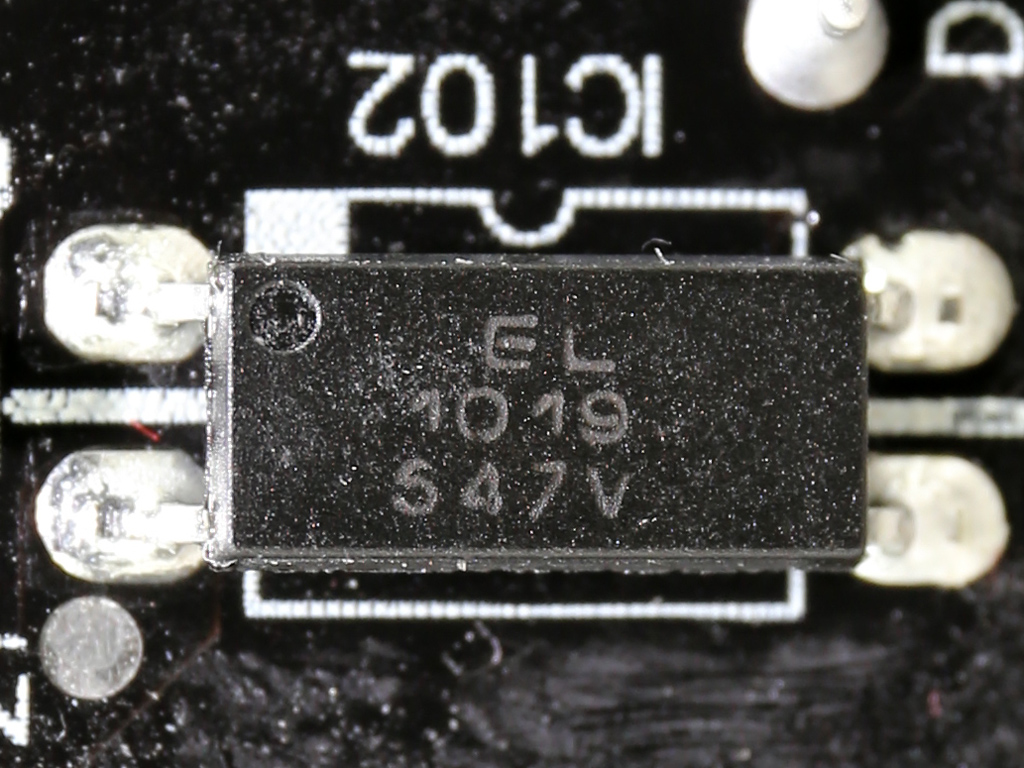
We're impressed by the soldering quality. Many interesting components are installed on this side. In addition to the ones we just mentioned, we also find the supervisor IC, a SITI PS229, which is supported by a AS358M op-amp. There are actually two AS358Ms, though only one of them is likely utilized by the unit's protection features.
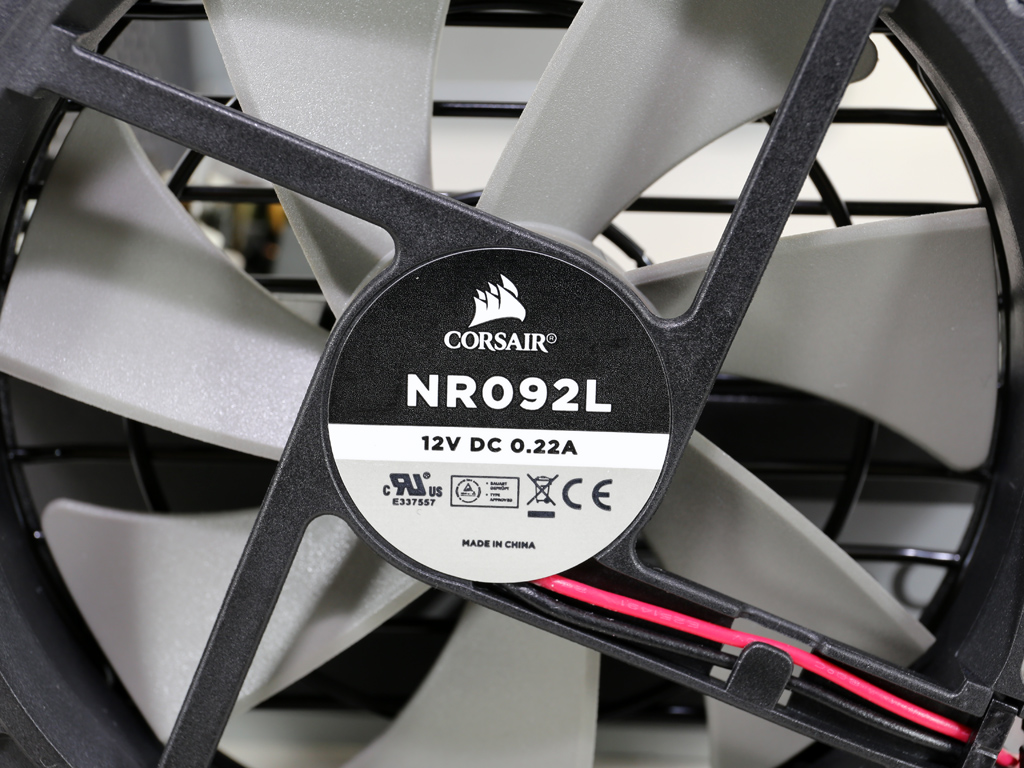
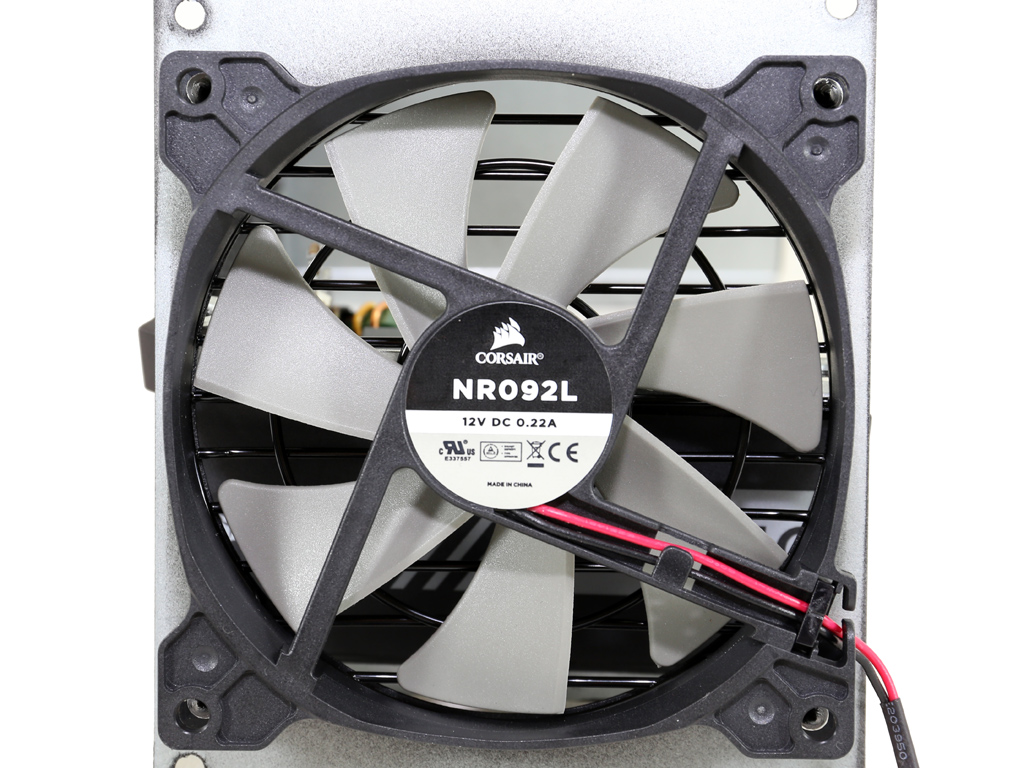
Corsair uses a 92mm rifle-bearing fan in both of its SF-series PSUs. The NR092L promises quiet operation even at higher speeds, thanks to its blades that purportedly increase airflow while keeping noise output as low as possible. The fan is supported by a semi-passive mode and a very relaxed ramp profile. We had to push the PSU hard to get its fan spinning at high speeds.
Current page: A Look Inside And Component Analysis
Prev Page Packaging, Contents, Exterior And Cabling Next Page Load Regulation, Hold-Up Time And Inrush Current
Aris Mpitziopoulos is a contributing editor at Tom's Hardware, covering PSUs.
-
spdragoo Interesting...a small-factor PSU with enough power & PCIe connectors for those with a prebuilt system that want to upgrade their GPUs without having to rebuild the entire system from scratch.Reply -
turkey3_scratch Reply17801331 said:"No berg connector," is a con? And this is why Johnnyguru is the better website.
I find it hard to believe you actually read power supply reviews, because on Jonnyguru OklahomaWolf always scores against having a berg connector. Also, Jonnyguru only tests a few things compared to Aris's reviews on Tomshardware and Techpowerup.
Edit: I just realize I misinterpreted what you said. I do apologize, it was my mistake. I did not realize the word "not". Yes, Aris and Jonnyguru have different reviews on berg connectors. I still don't think that just because a berg connector is a good thing means that Jonnyguru is a better review site. That seems to be an extremely minor detail to judge one whole review site to this one. -
Onus Hmmm, looks like the only thing not to like is that all the SATA connectors are on one cable, which could be a problem even in some small cases where this would be used; the optical drive might not be near the other drives.Reply -
jimmysmitty Reply17801372 said:Hmmm, looks like the only thing not to like is that all the SATA connectors are on one cable, which could be a problem even in some small cases where this would be used; the optical drive might not be near the other drives.
And that is easy to solve since you will probably be able to buy cables and change the molex out for another SATA cable, like all Corsair PSUs.
I wish this was out when I rebuilt my HTPC. Would have preferred it since what was available at the time was just meh and nowhere near the performance. -
turkey3_scratch Just finished review. Great unit, wonderful. I'd take this over one of the Silverstones any day.Reply -
Aris_Mp Reply"No berg connector," is a con? And this is why Johnnyguru is the better website.
Some components still need a berg connector ( e.g. sound card panels, fan controllers, etc.) And it costs almost nothing to add a berg adapter into the bundle.
-
JQB45 Exciting to see more SFF power supplies of good quality. Now I have even less reason not to buy a mini-itx case next time.Reply -
turkey3_scratch Reply17801331 said:"No berg connector," is a con? And this is why Johnnyguru is the better website.
On second read of your post, I misinterpreted what you said, and I do apologize. I thought you were upset that including a berg connector was a con, I'm sorry I misinterpreted it. Yeah, this unit doesn't have a berg connector. Here's the thing: you have OklahomaWolf who scores against having berg connectors, and you have Aris who likes to see berg connectors. Two complete opposite subjective standpoints. What I don't understand is how this makes Jonnyguru a better site.
Whenever I read power supply reviews, I always ignore the conclusion page. I usually don't read it. The information is all there for you to judge. Whether or not the author thinks a berg connector is good or bad is an opinion, but it does not detract from how professional Aris's reviews are. I mean, come on, Jonnyguru does not test transient response, hold-up time, AC_LOSS to PWR_OK, 1500 crossload possibilities, extensive efficiency and fan RPM, etc. tests. I just can't see how Jonnyguru can be a better review site because they only do a fractional amount of testing.
Jonnyguru's resources are limited, so it's understandable. I think some people like Jonnyguru just because of how "fast" one can fly through the reviews. It takes me a solid 25 minutes of thorough analysis to read Aris's reviews, I can go through a Jonnyguru one in under 10 minutes. There is just so much information here, so why is it you think Jonnyguru is a better site? -
AlistairAB Thank you Tom's Hardware for highlighting the lack of the SFX adapter bracket. It can be purchased directly from Corsair at the following link:Reply
http://www.corsair.com/en-us/sfx-to-atx-psu-adapter-bracket
This was also mentioned in a newegg.ca review, and received many down votes. Perhaps this is because of American focused reviews, so most people think it is not a big deal to order a $5.99 adapter directly from Corsair or through a 3rd party.
However this is actually a serious mistake, as ordering this to Canada from Corsair requires over $50 USD in shipping. Total cost for the bracket after shipping and taxes is over $80 CAD which is absolutely ridiculous for a part with no retail availability or alternatives that should have been included in the box.
I talked with Corsair support this morning and opened a ticket, and they provided exemplary customer service and have now promised to send the adapter to me in Canada for free. Perhaps this will work for some of you having the same problem.
There are many small form factor cases that accept ATX PSUs that need this bracket (Silverstone and Lian Li cases), where the short cable lengths don't pose a problem.
